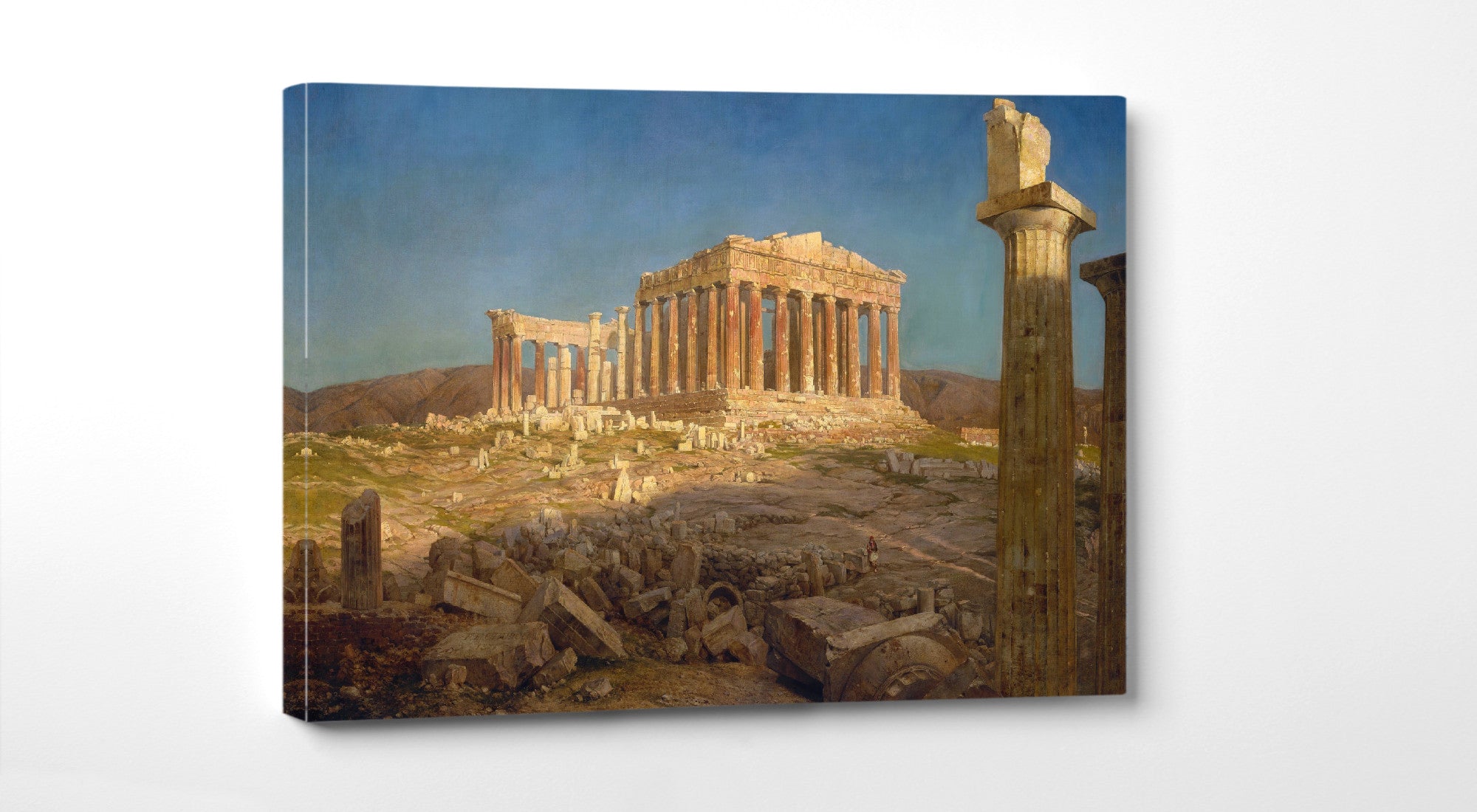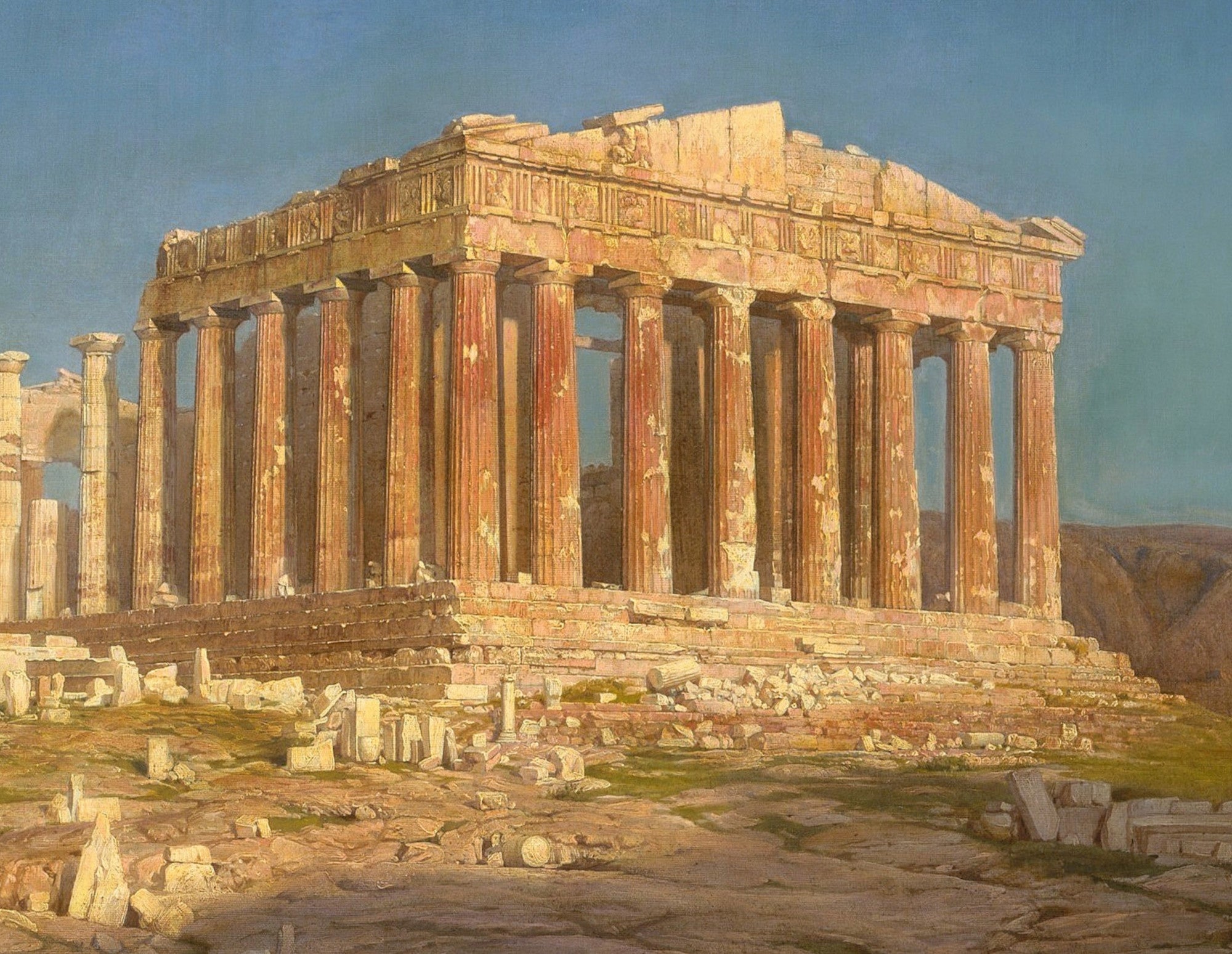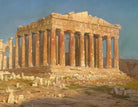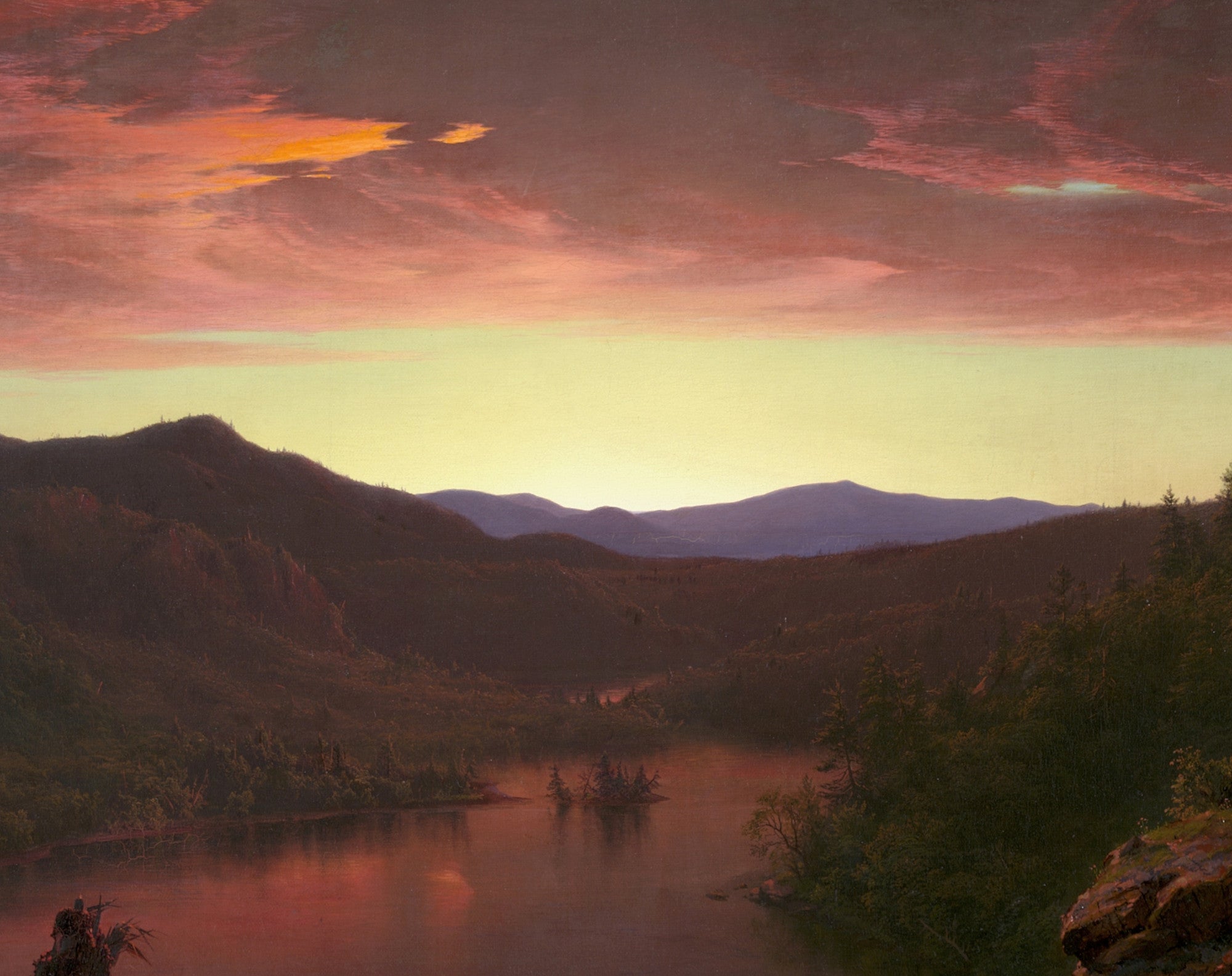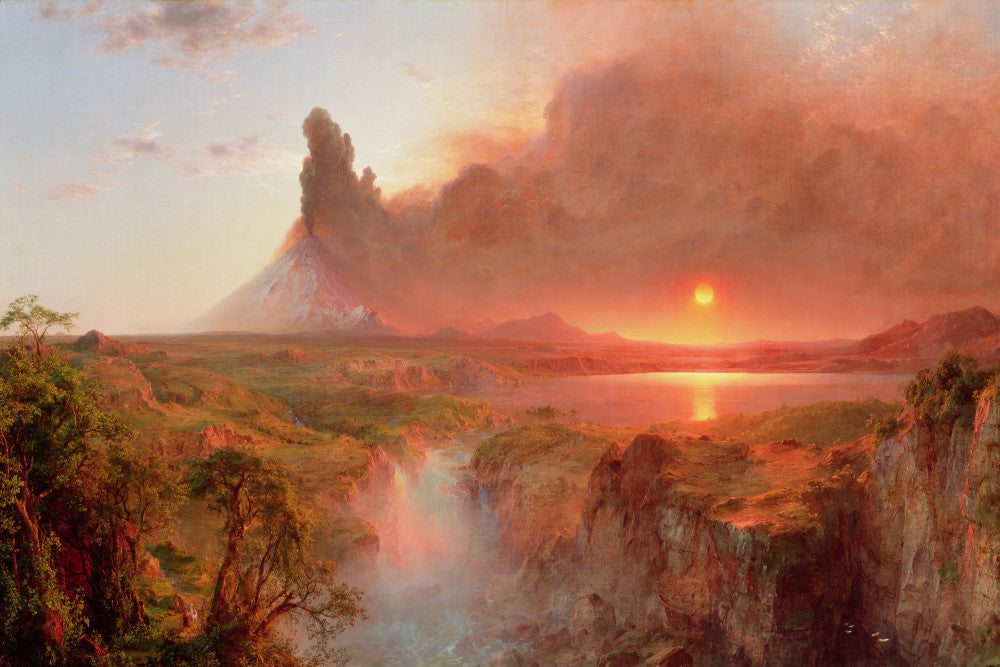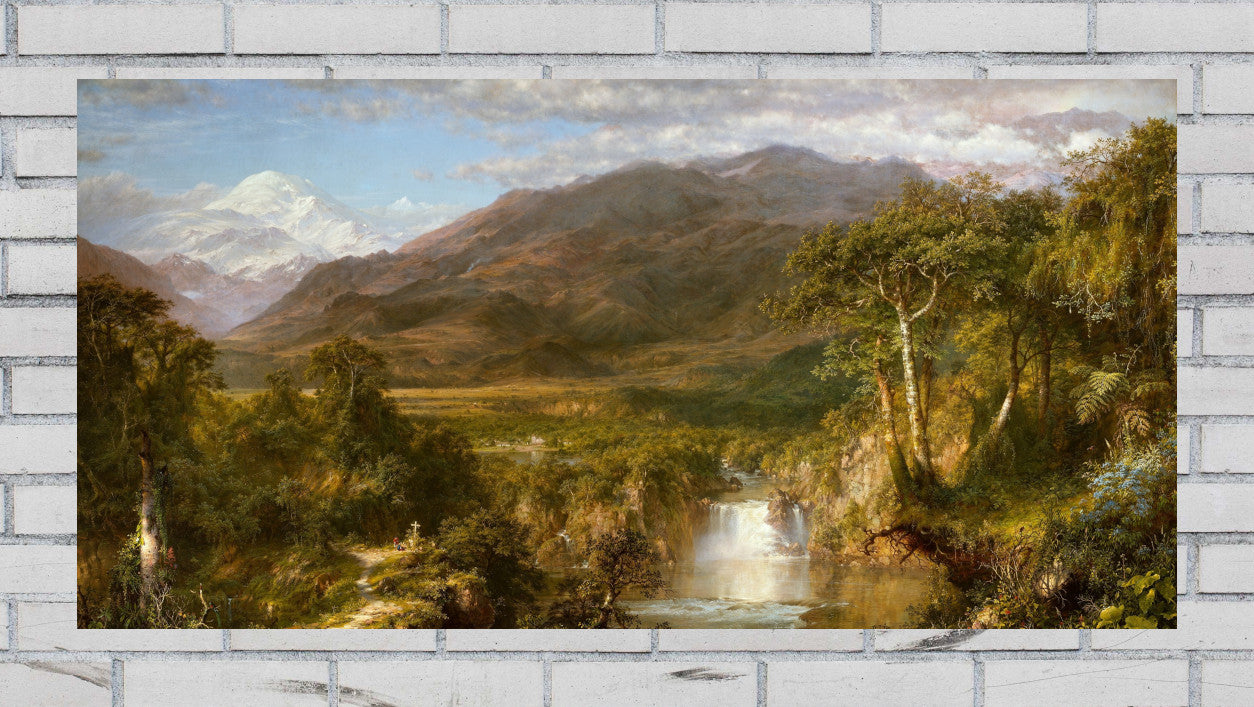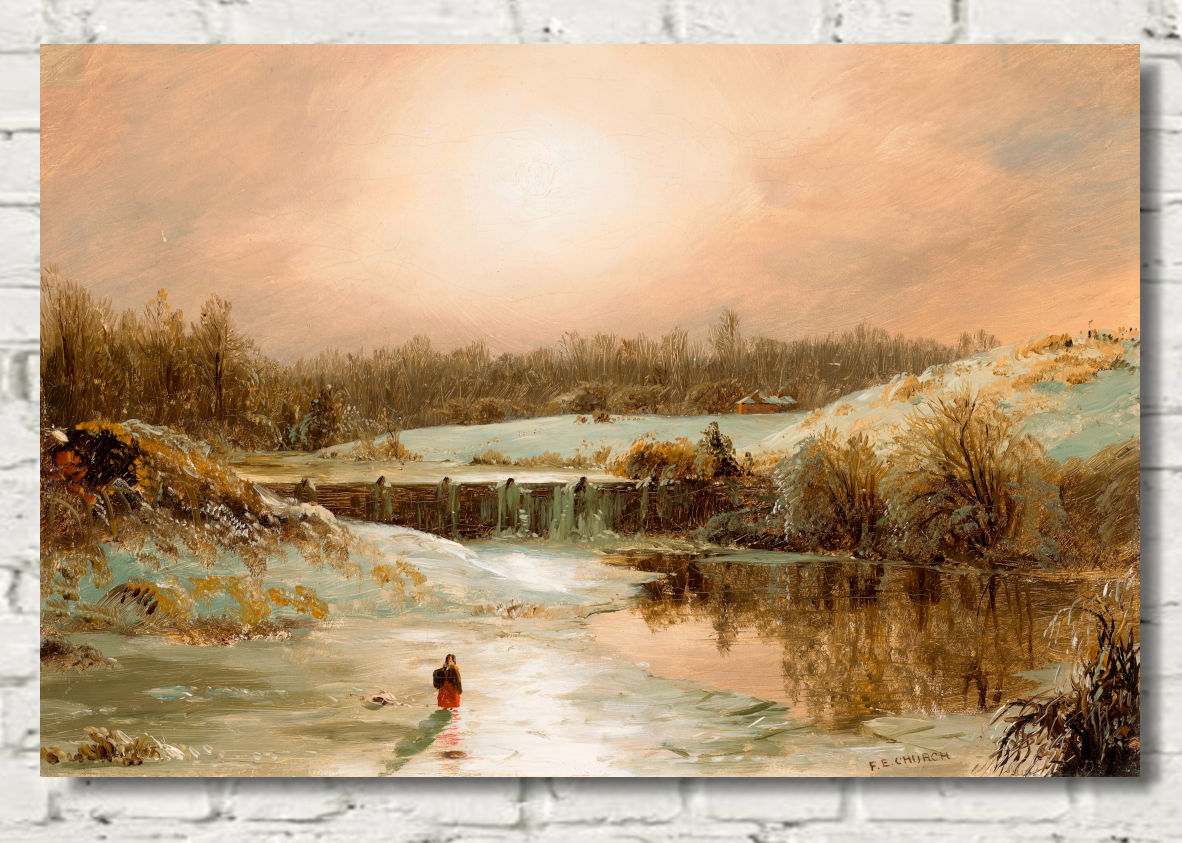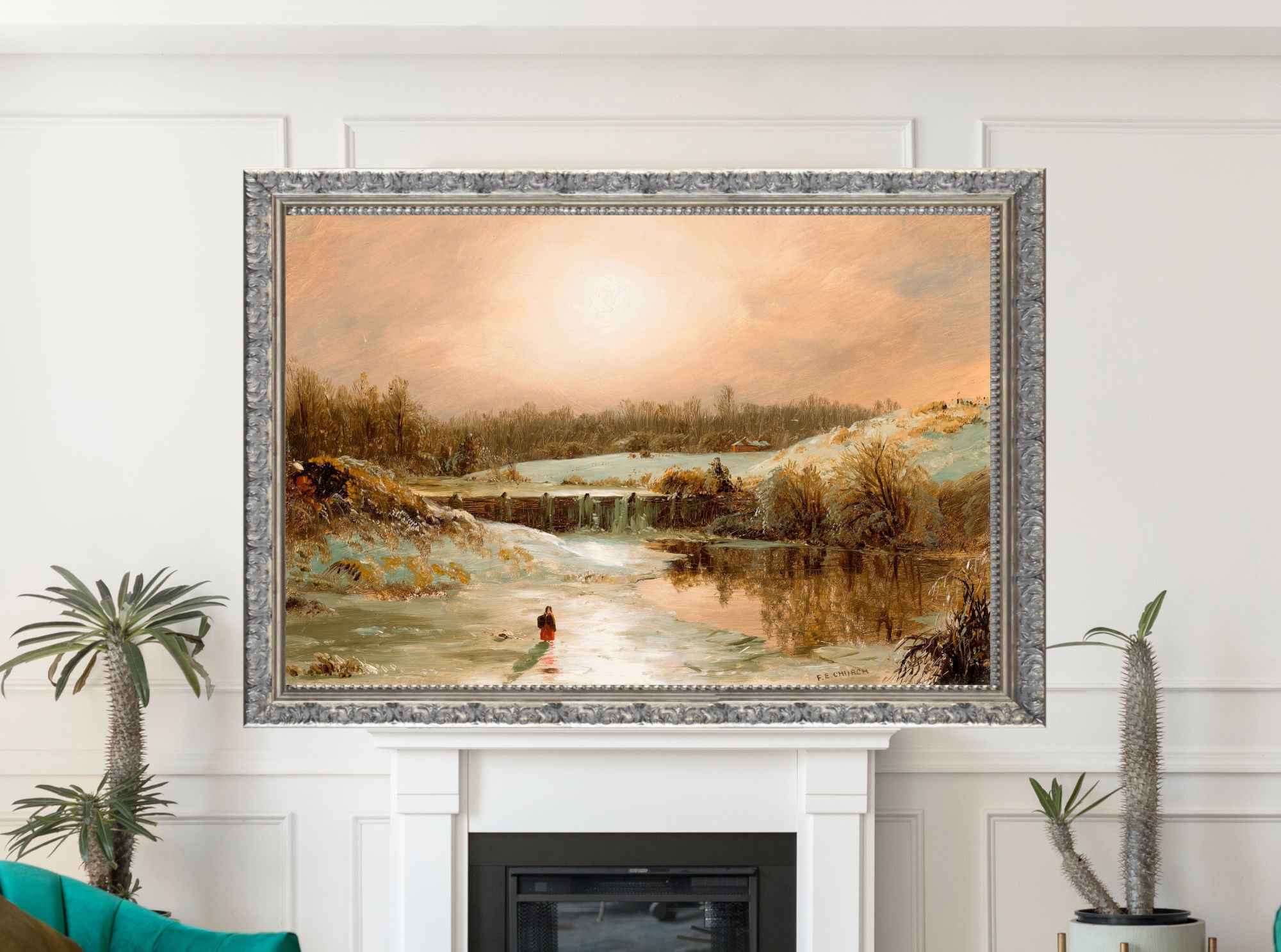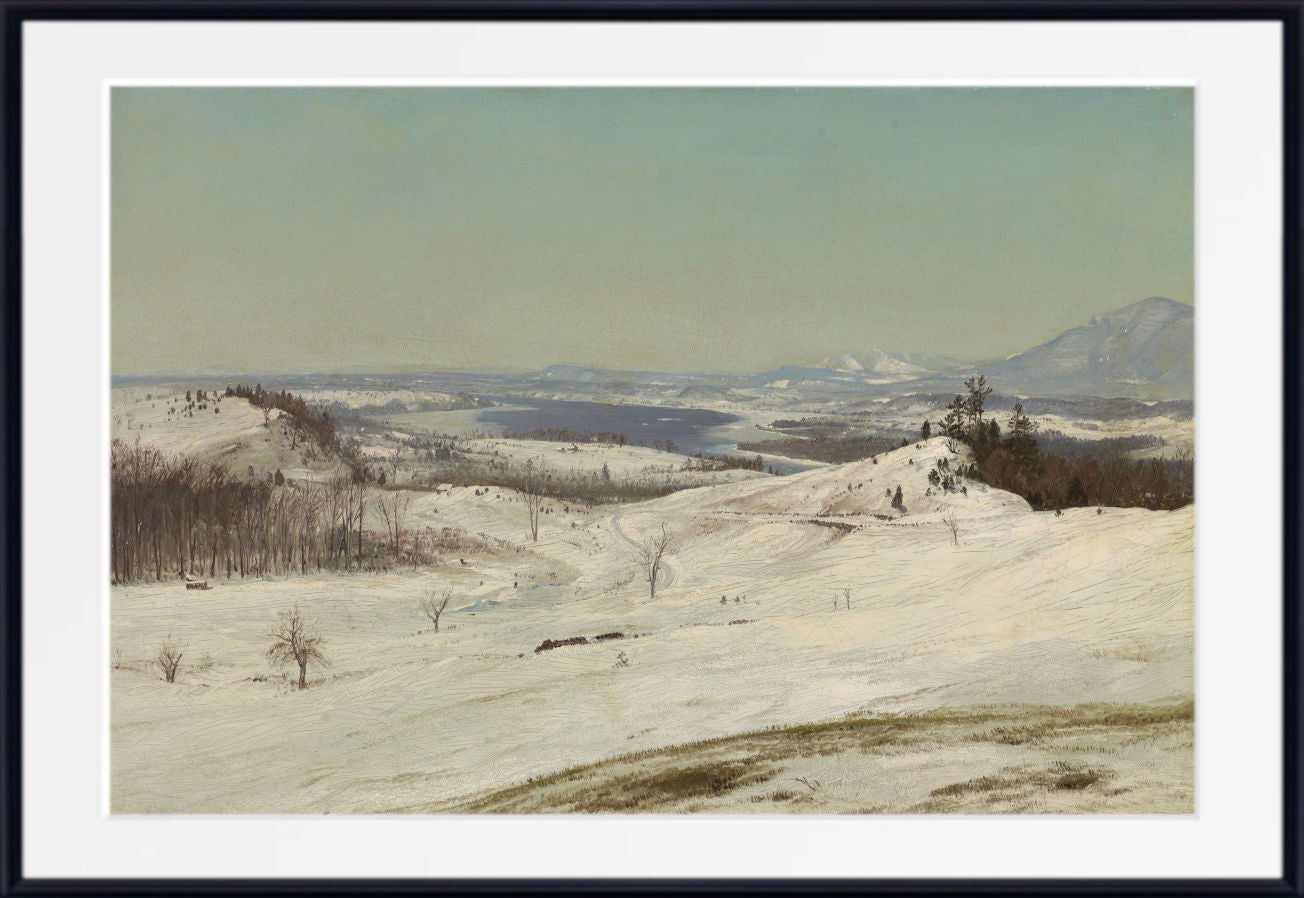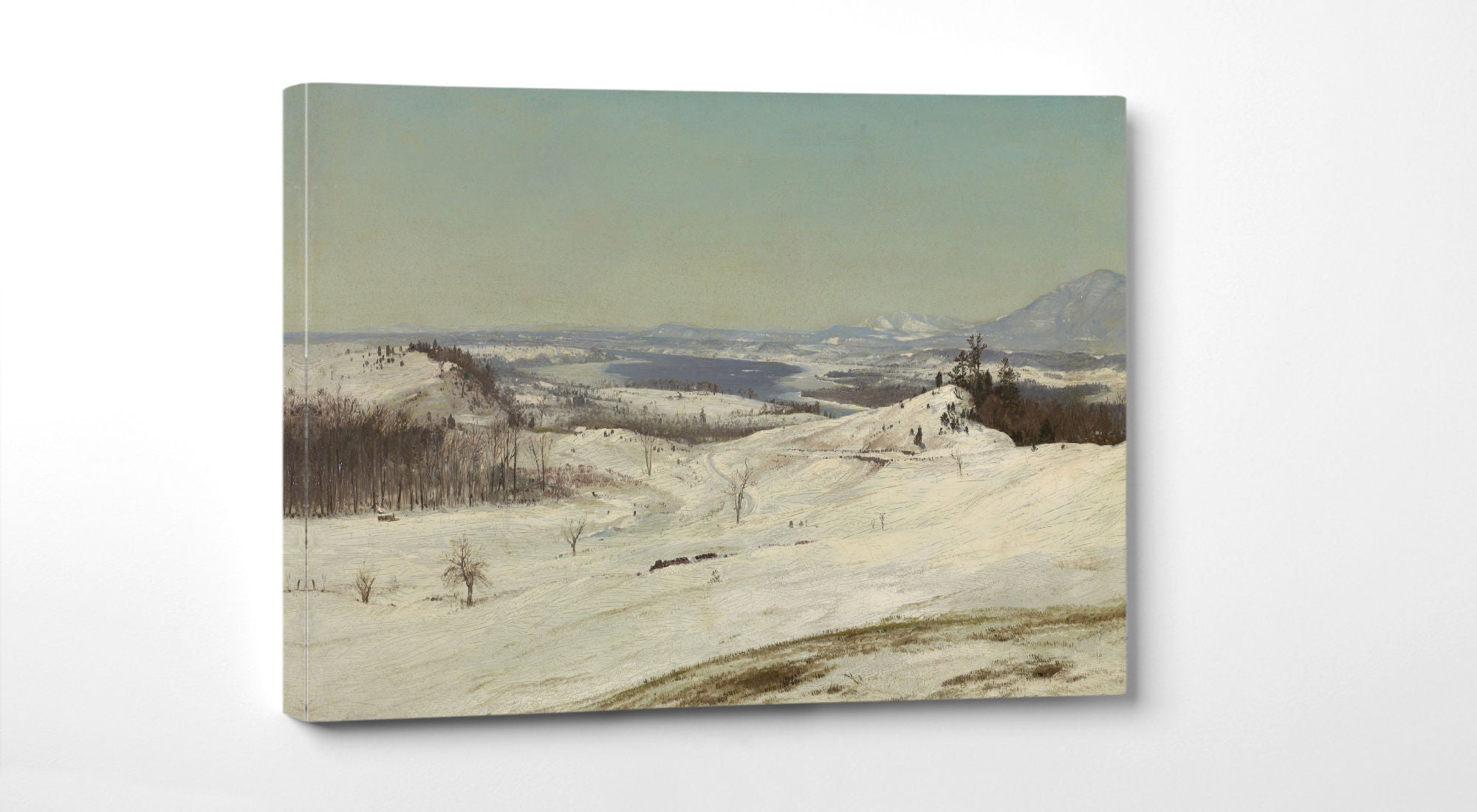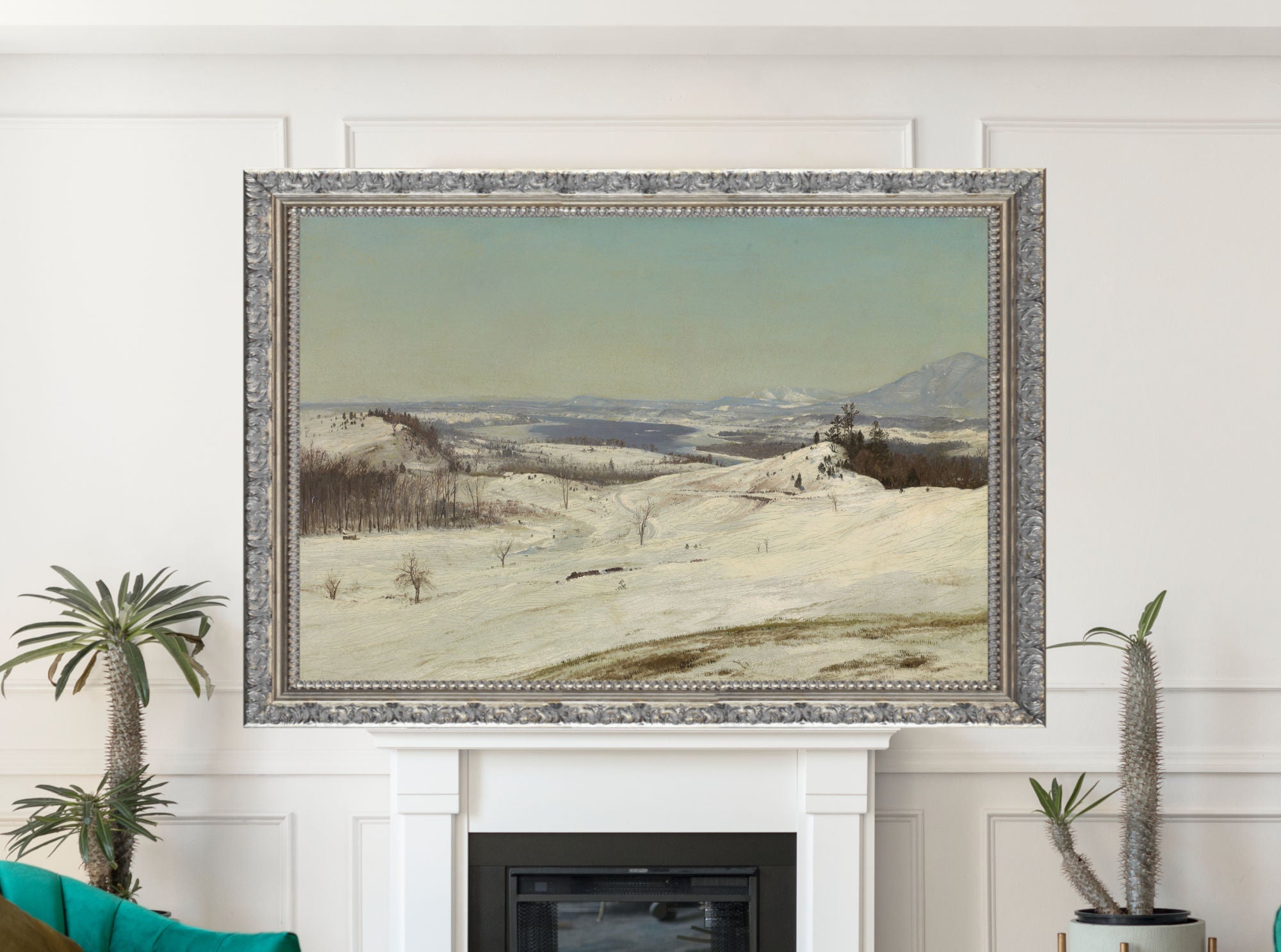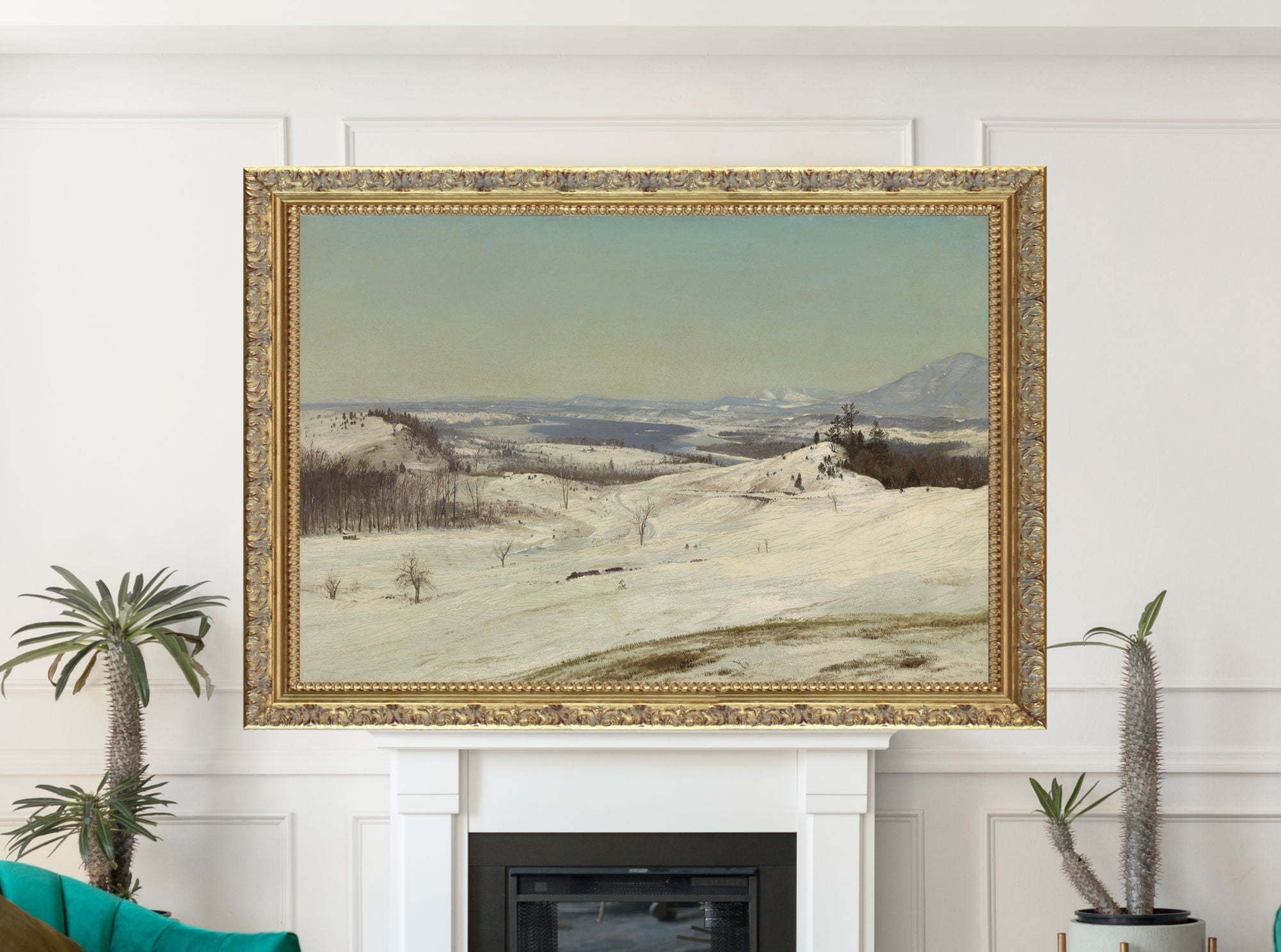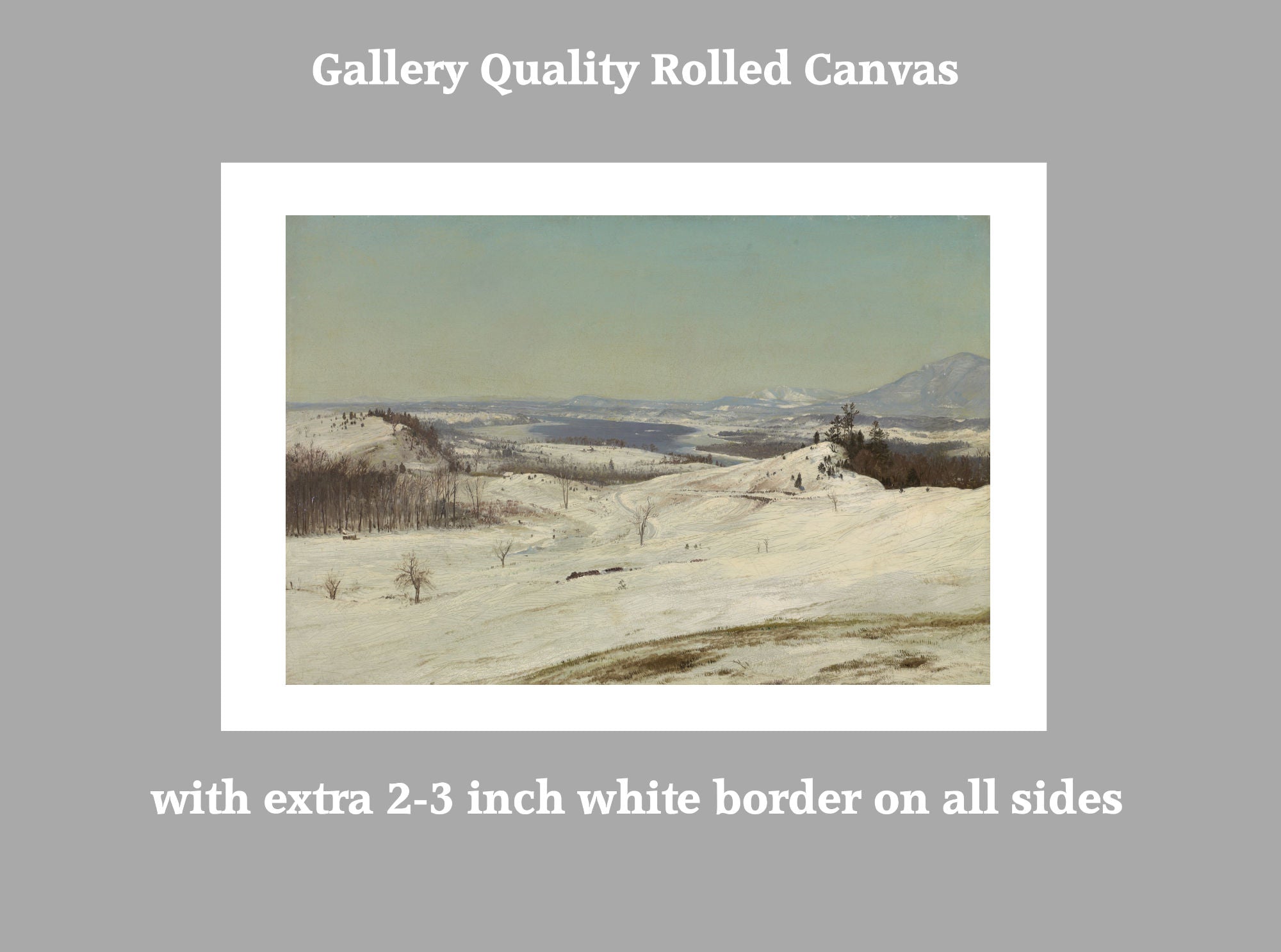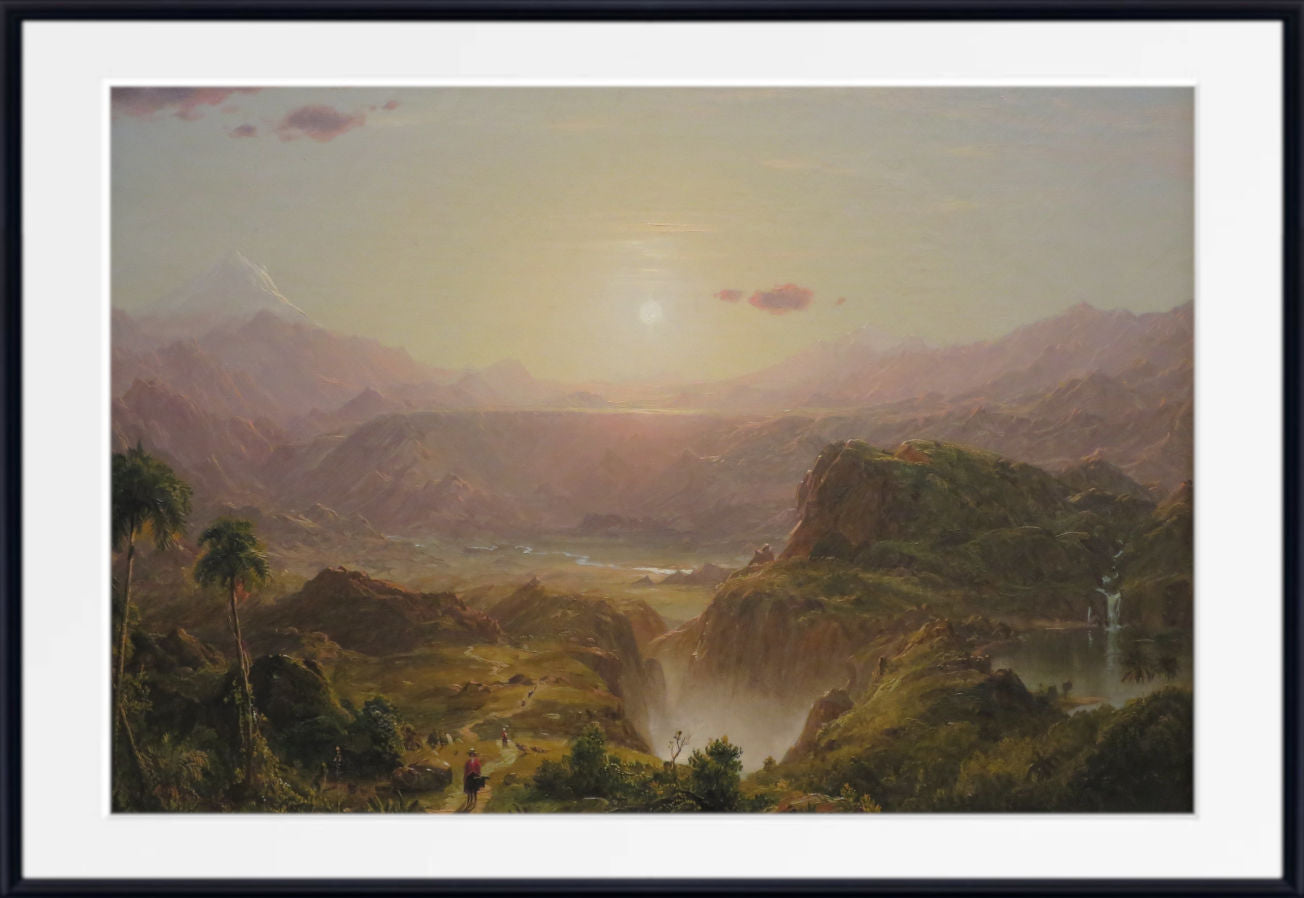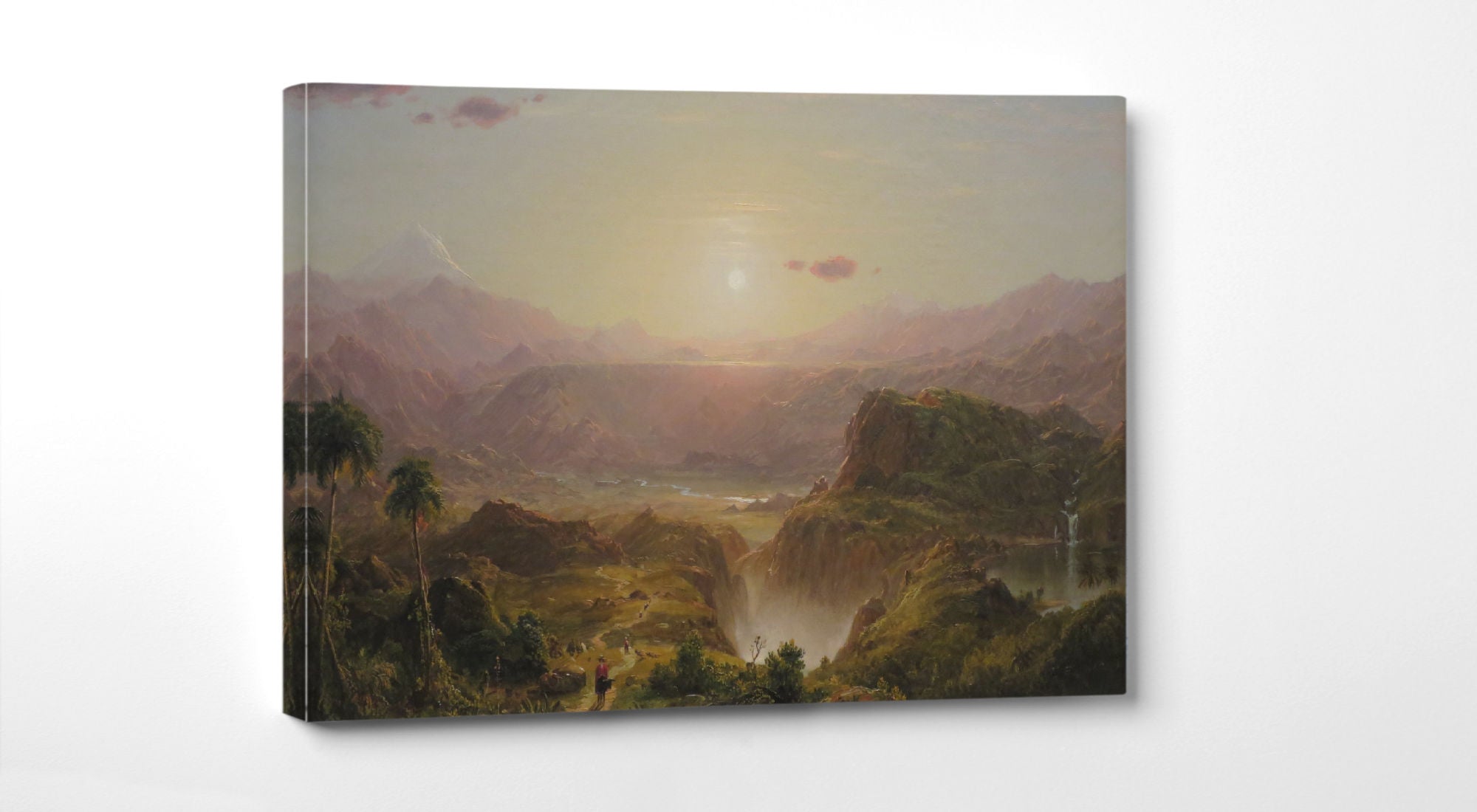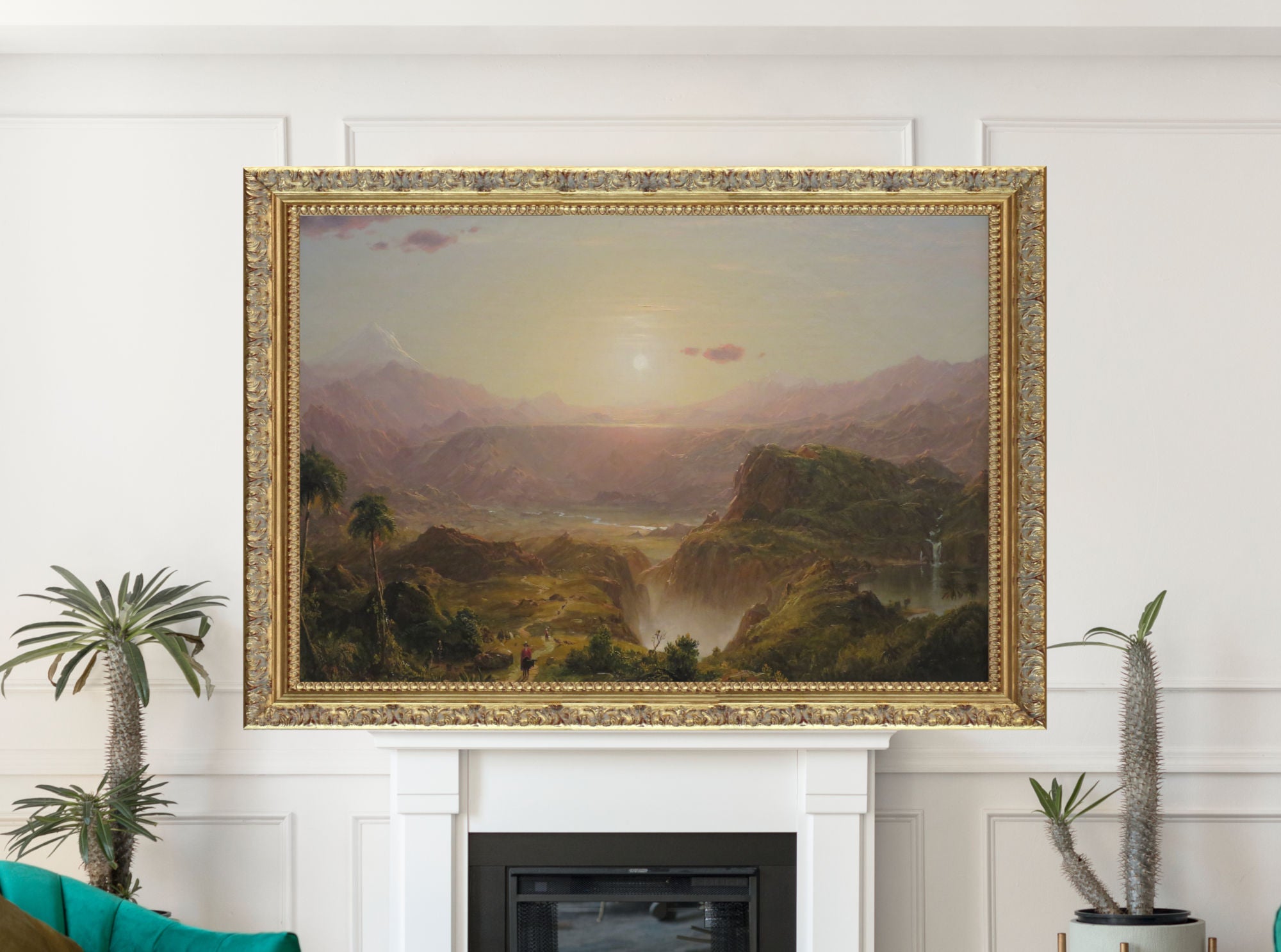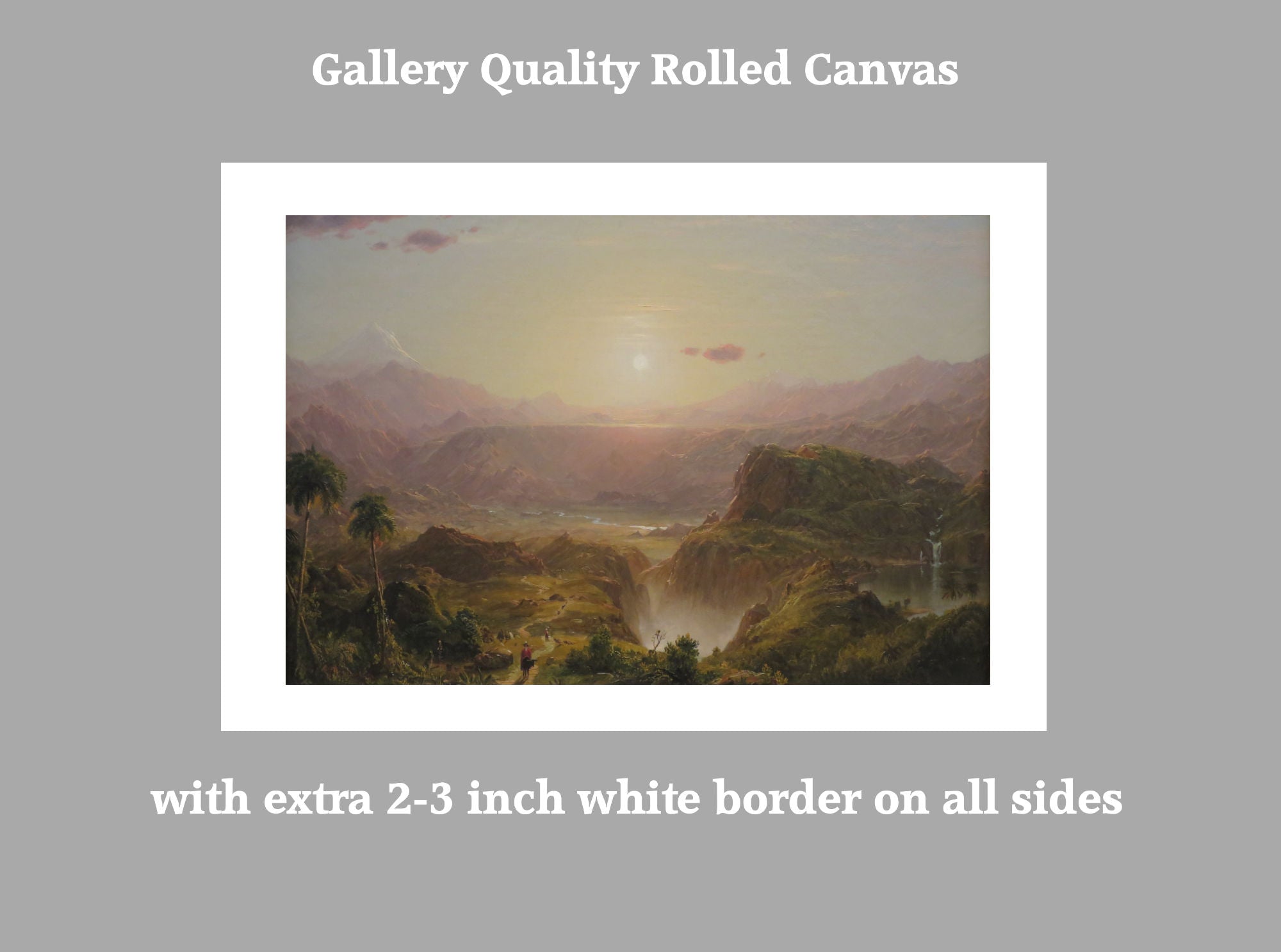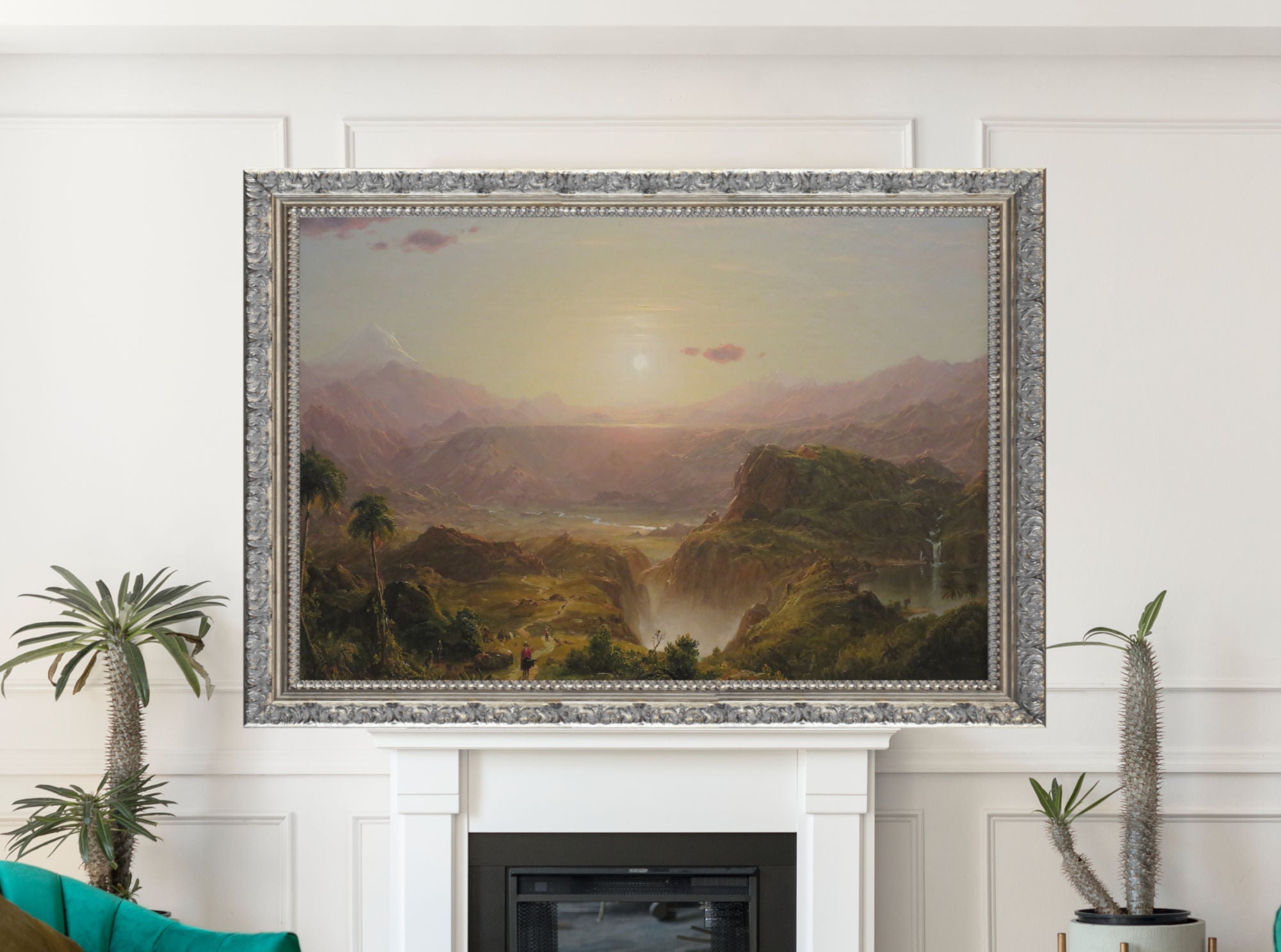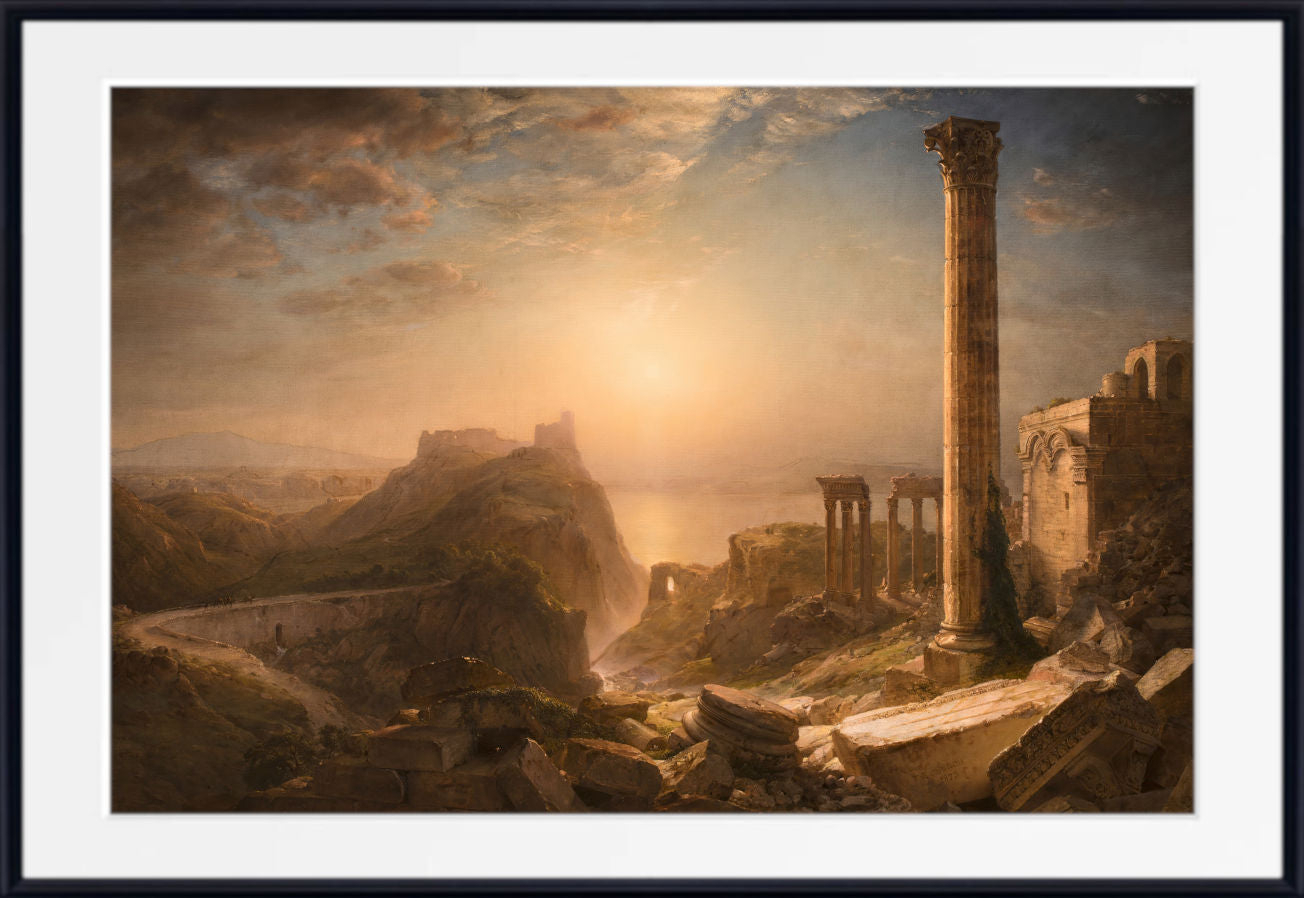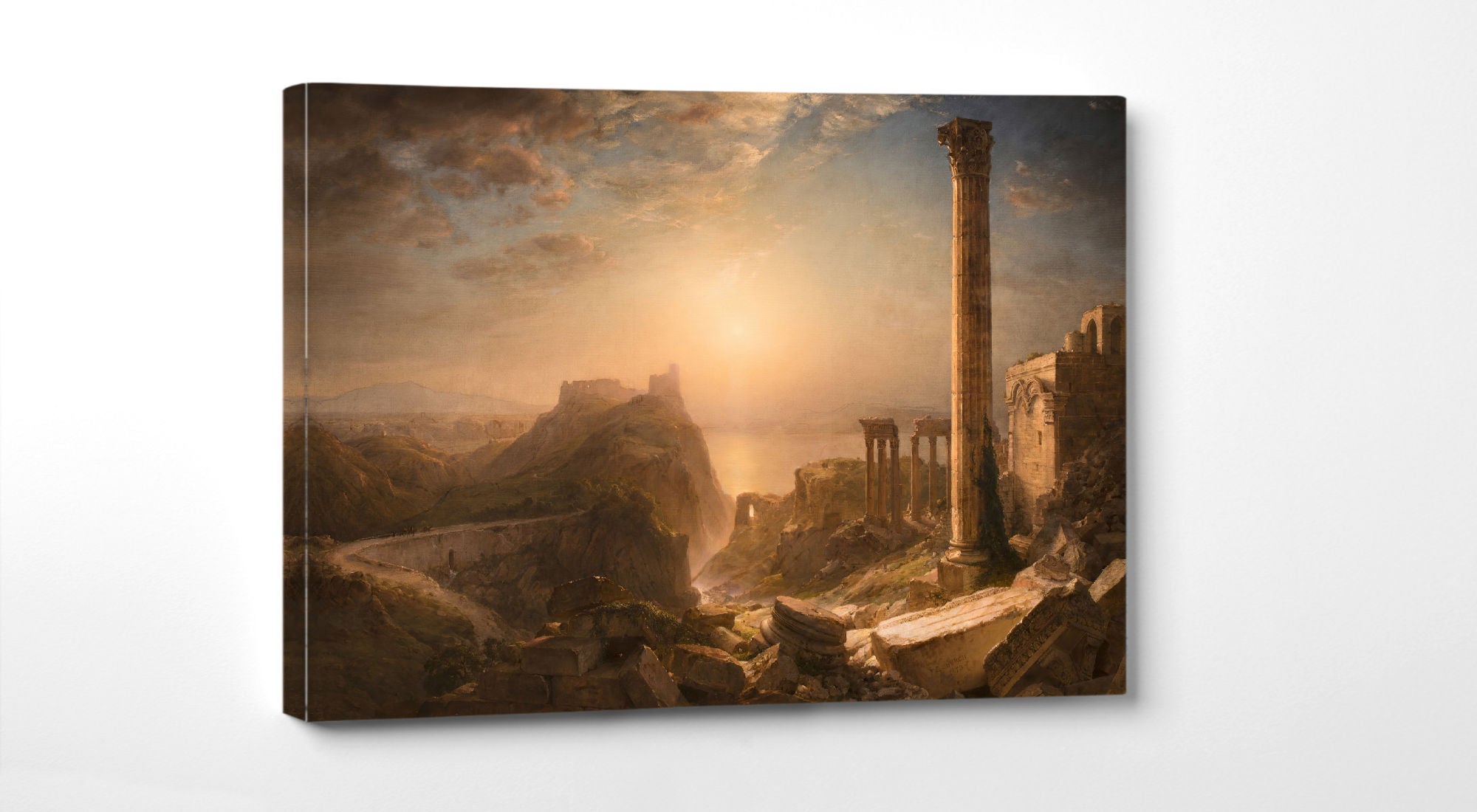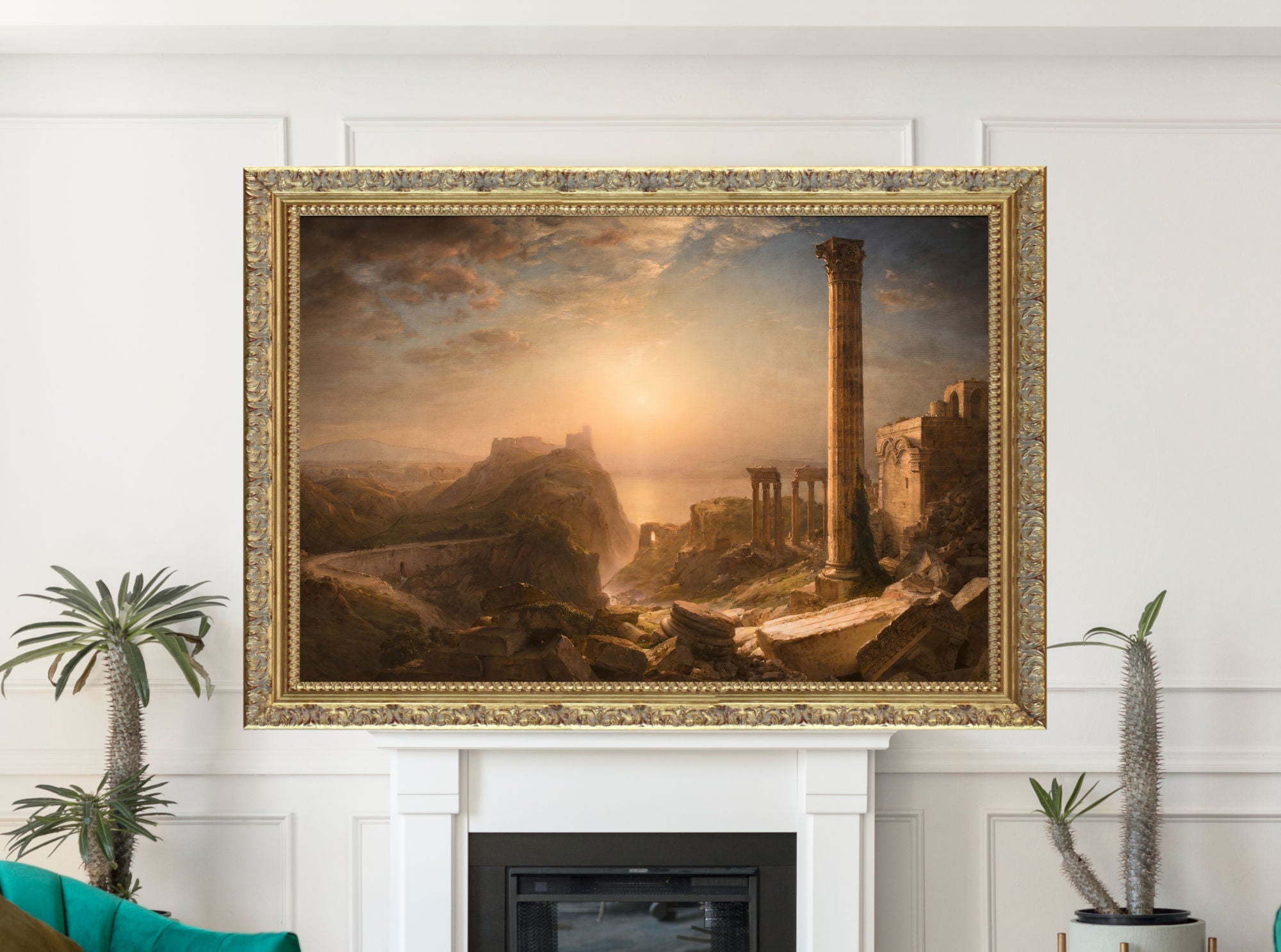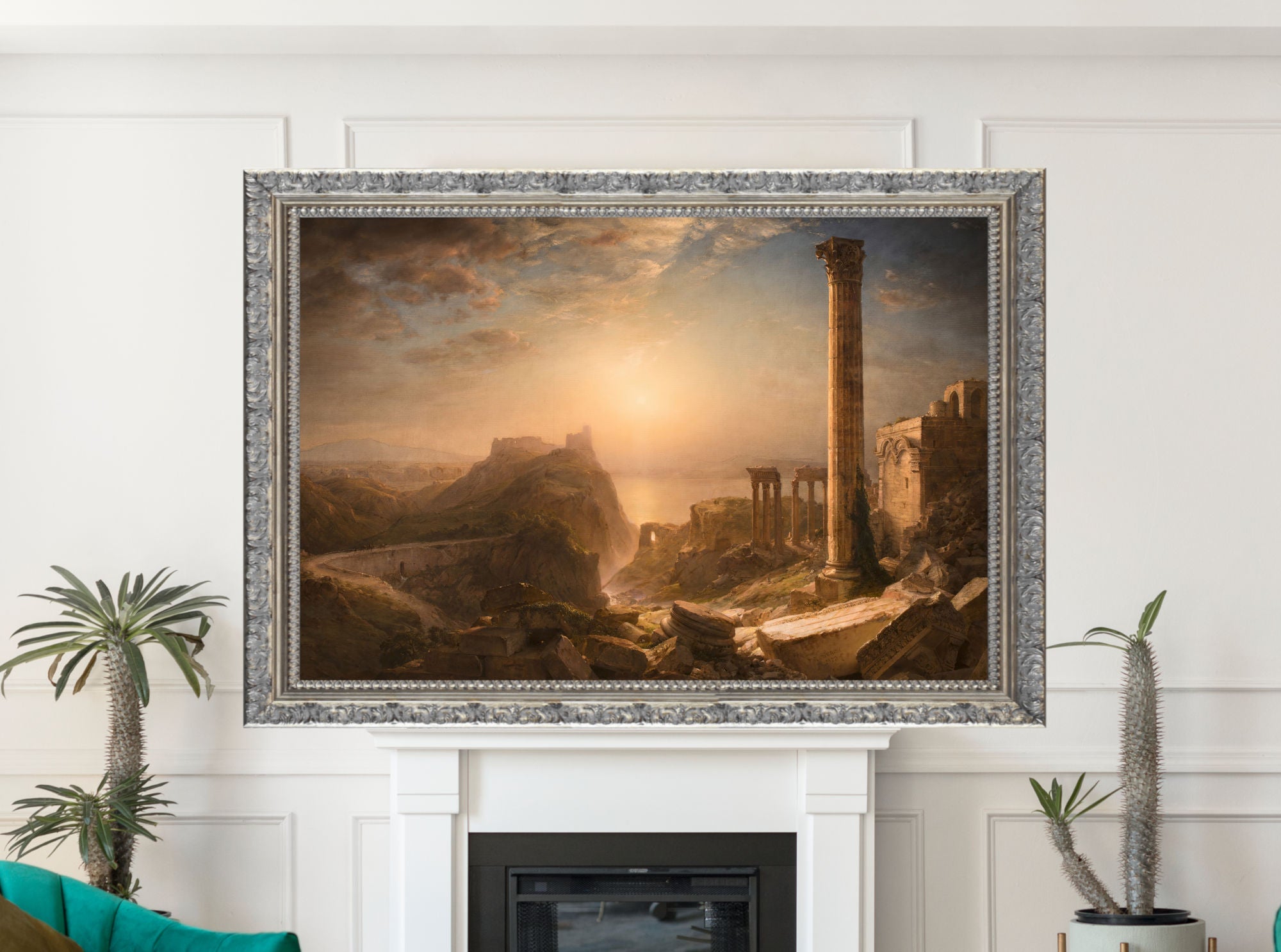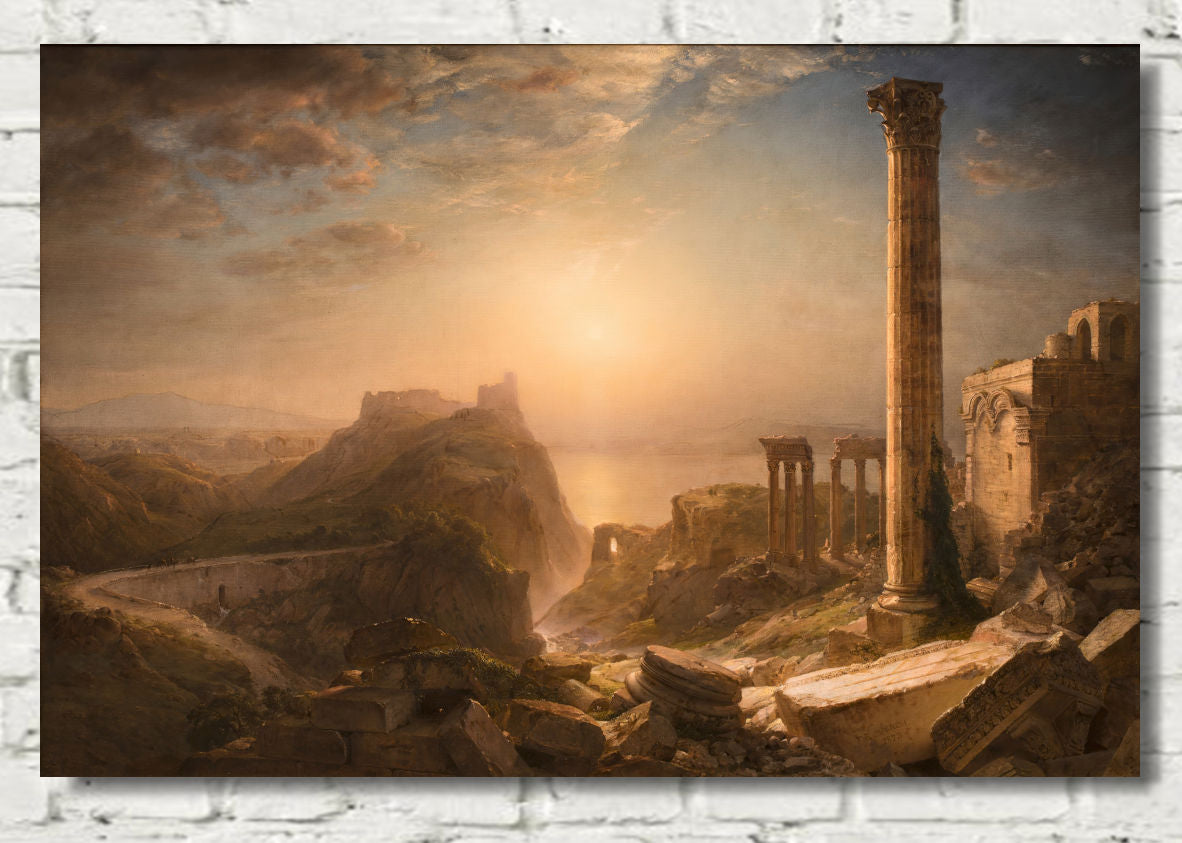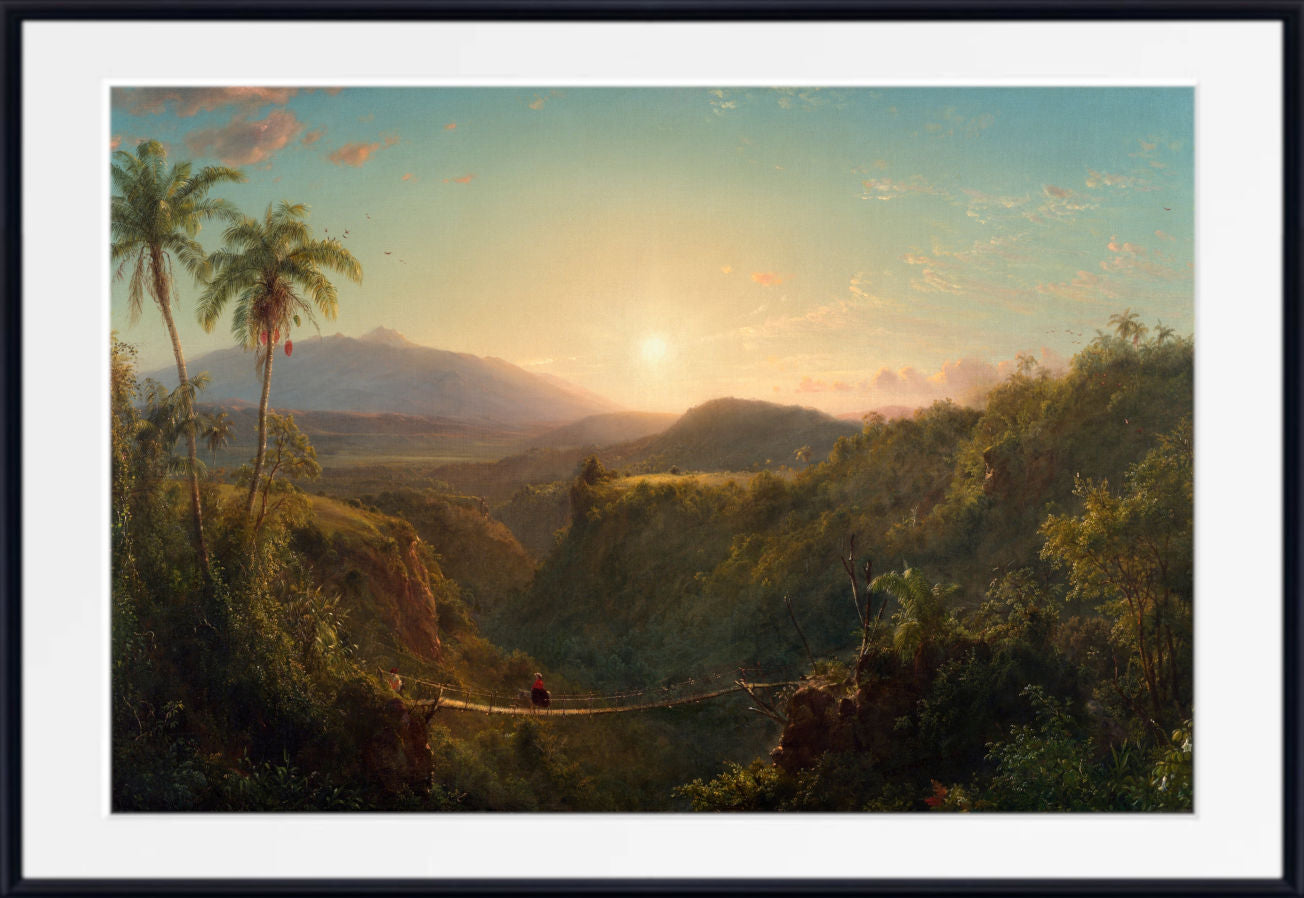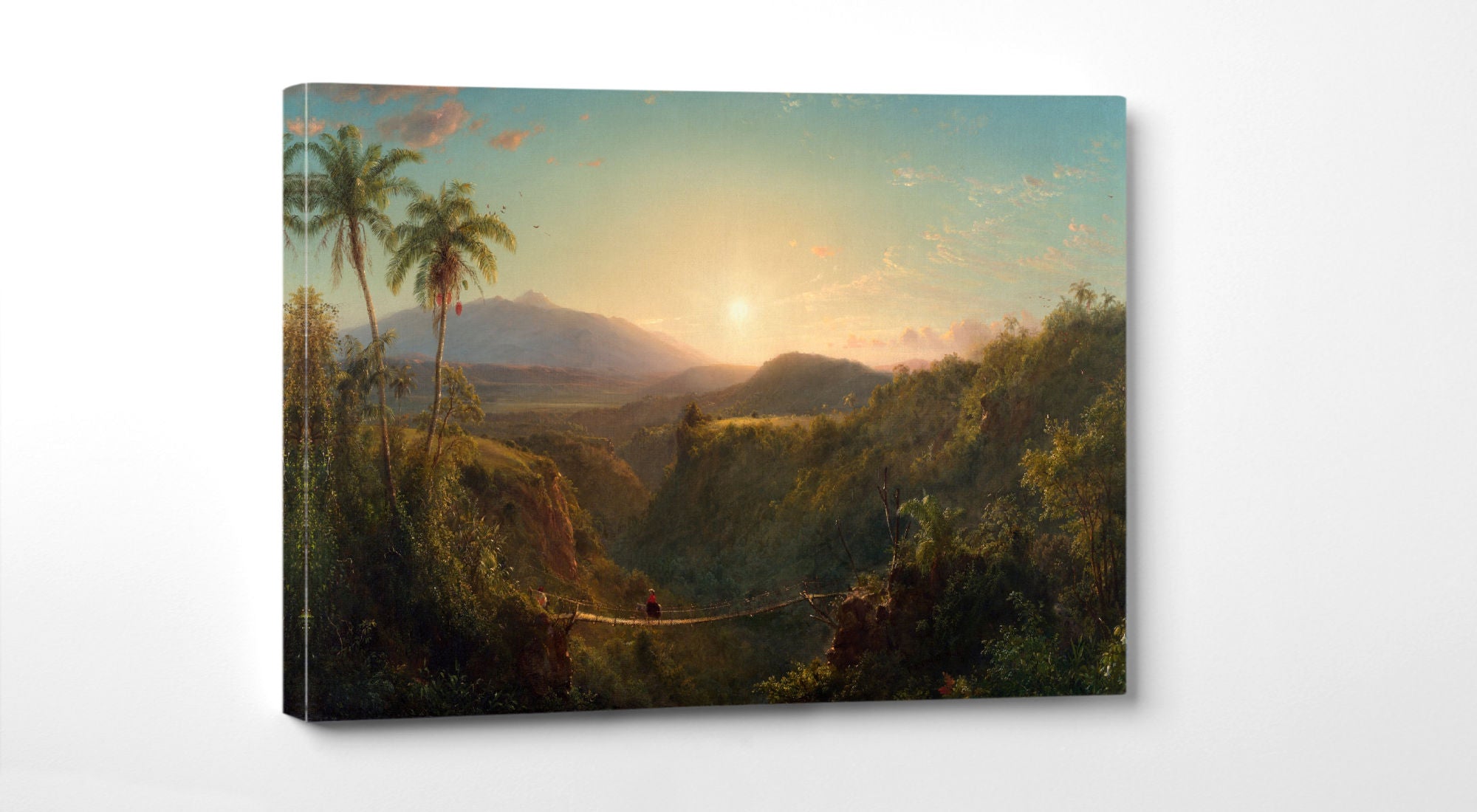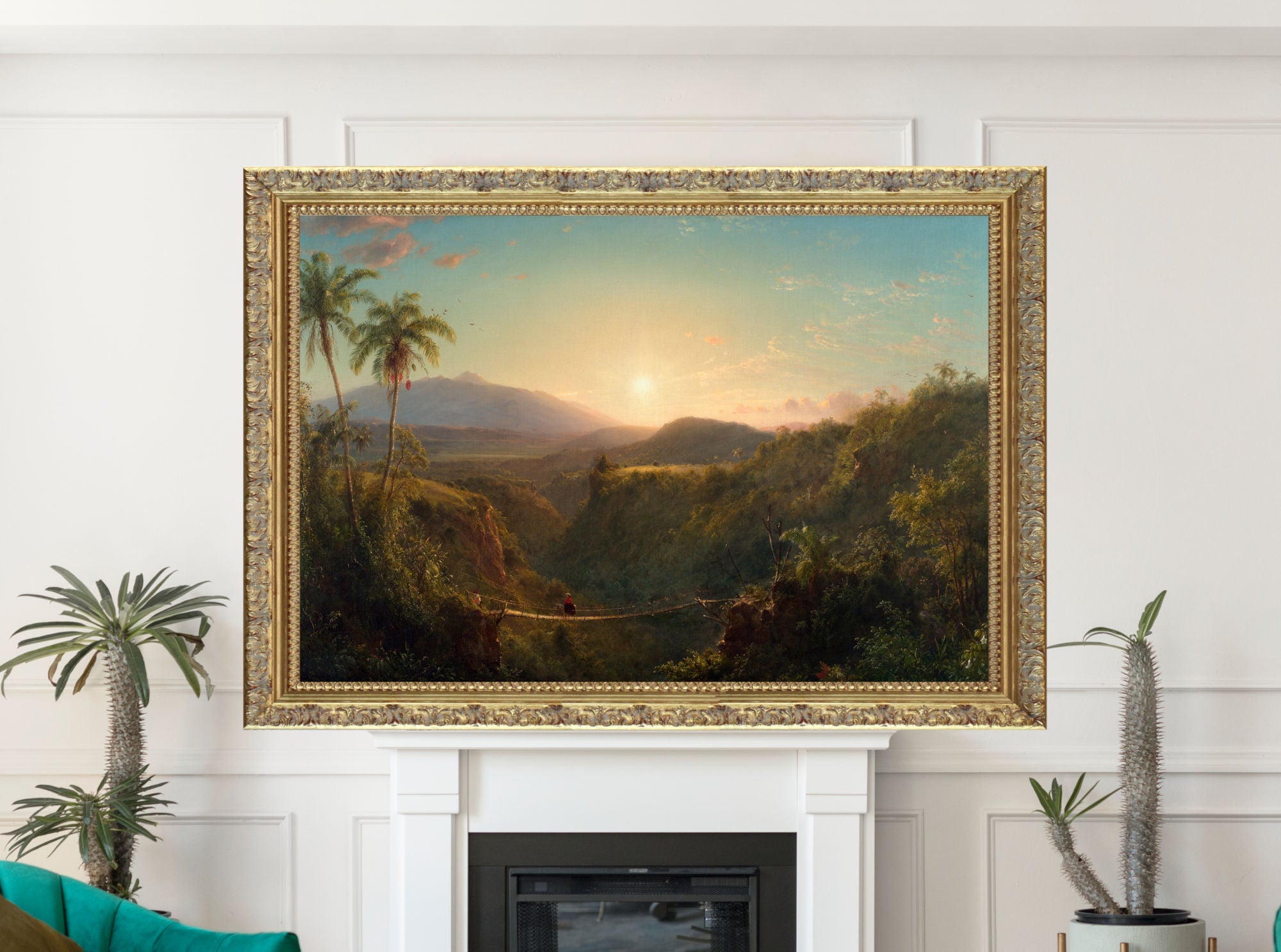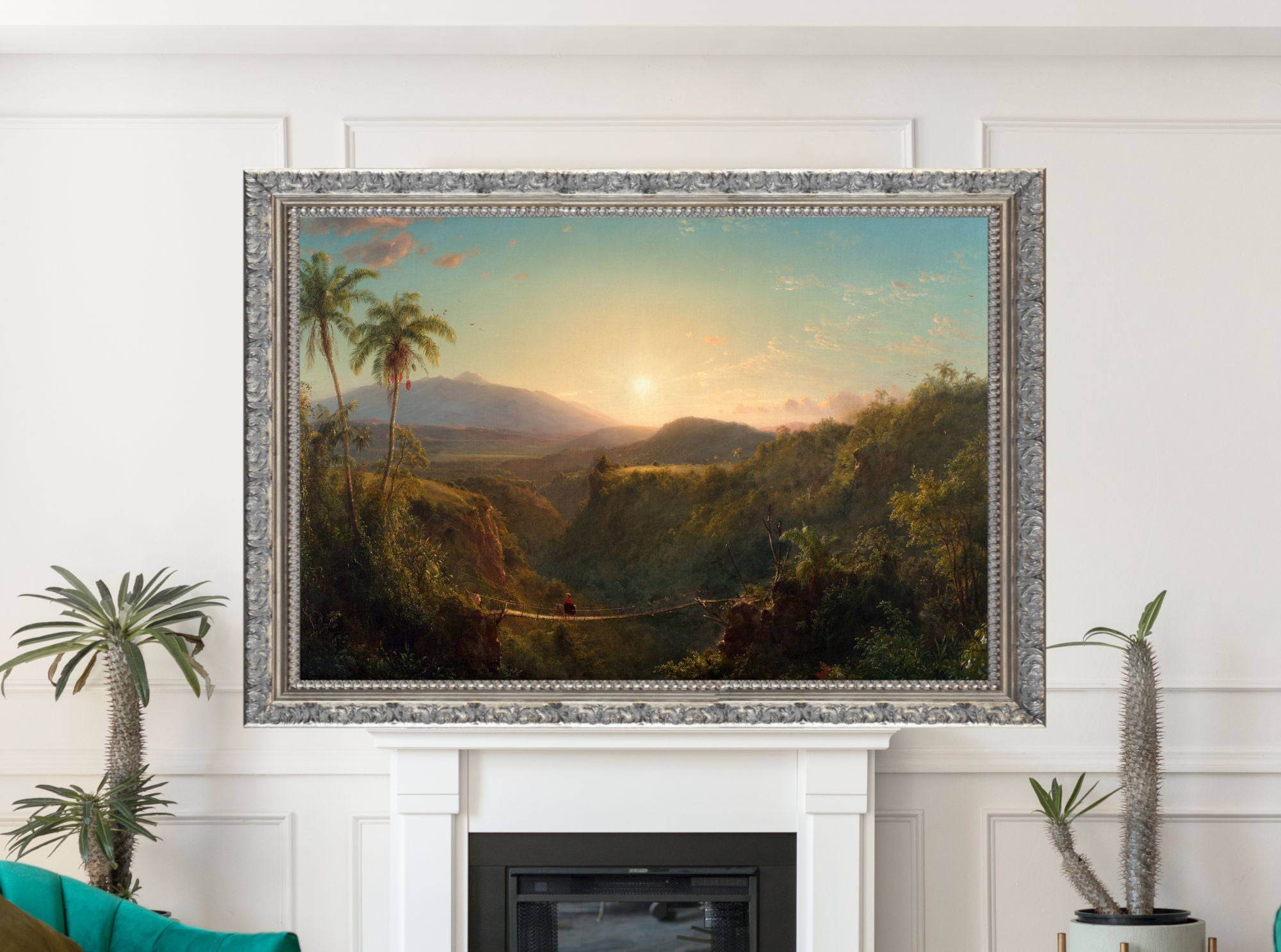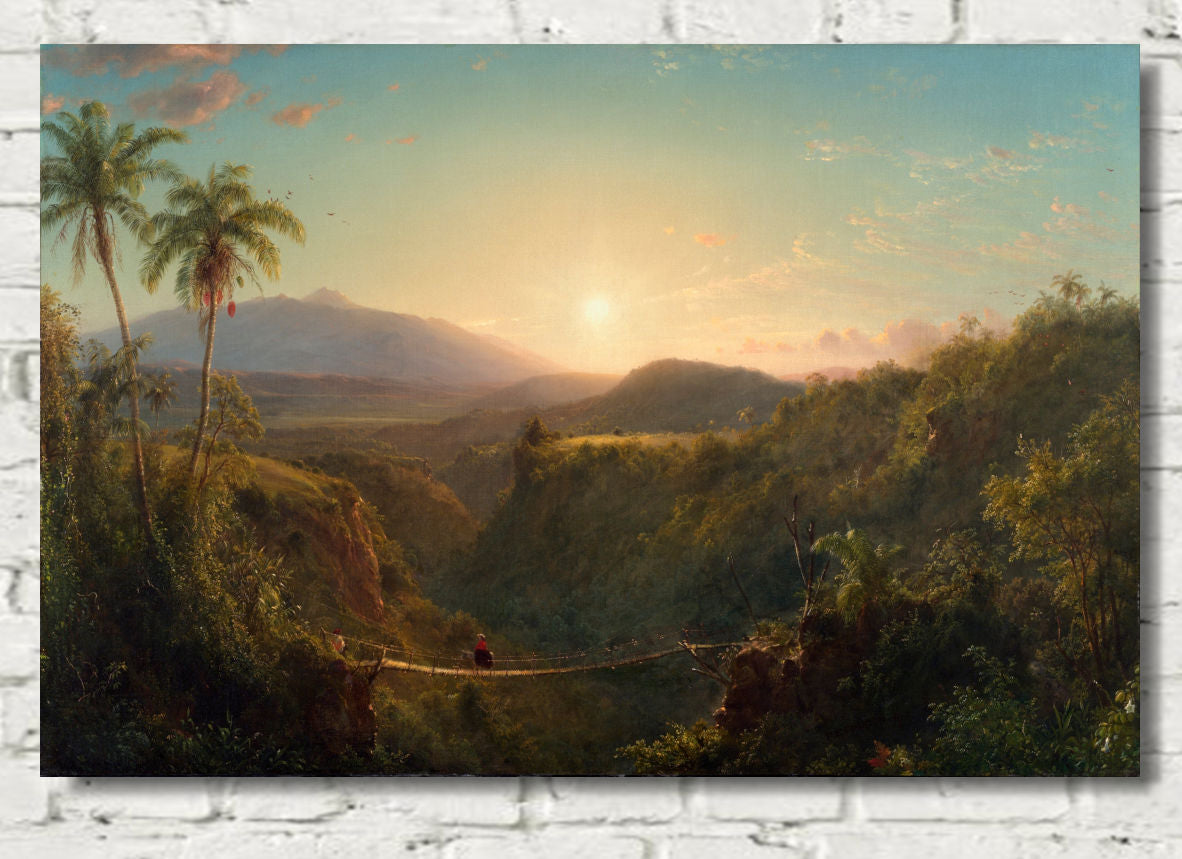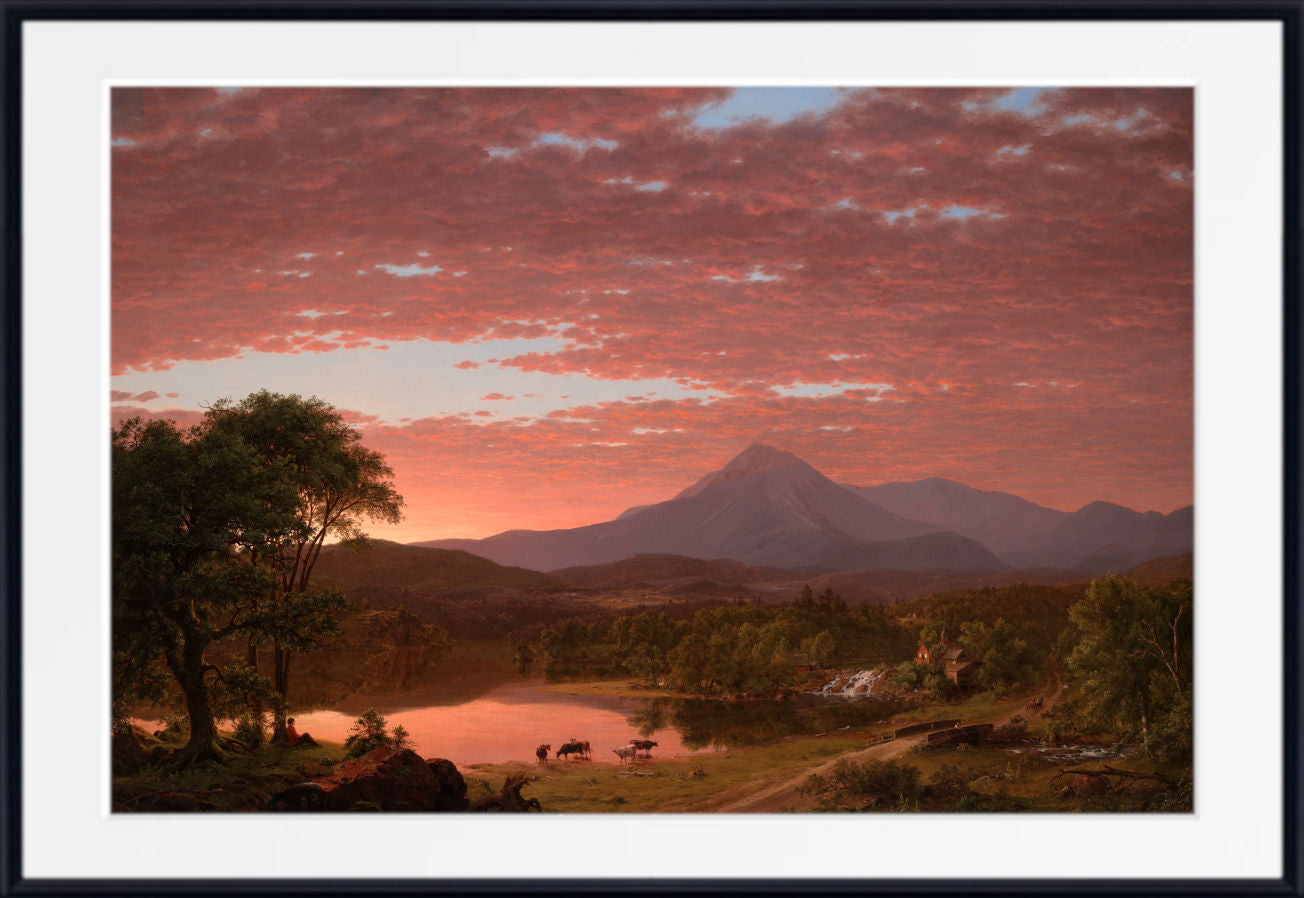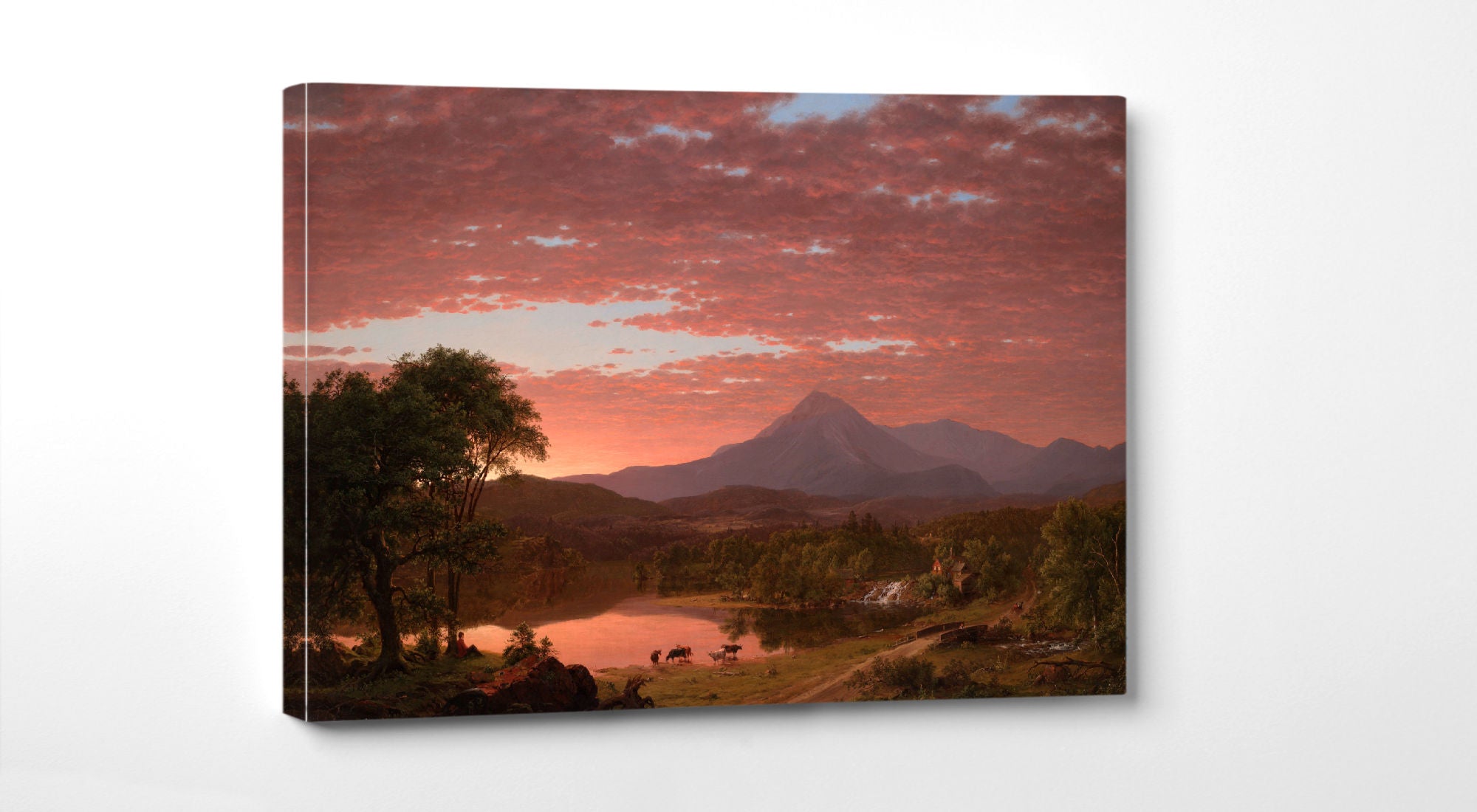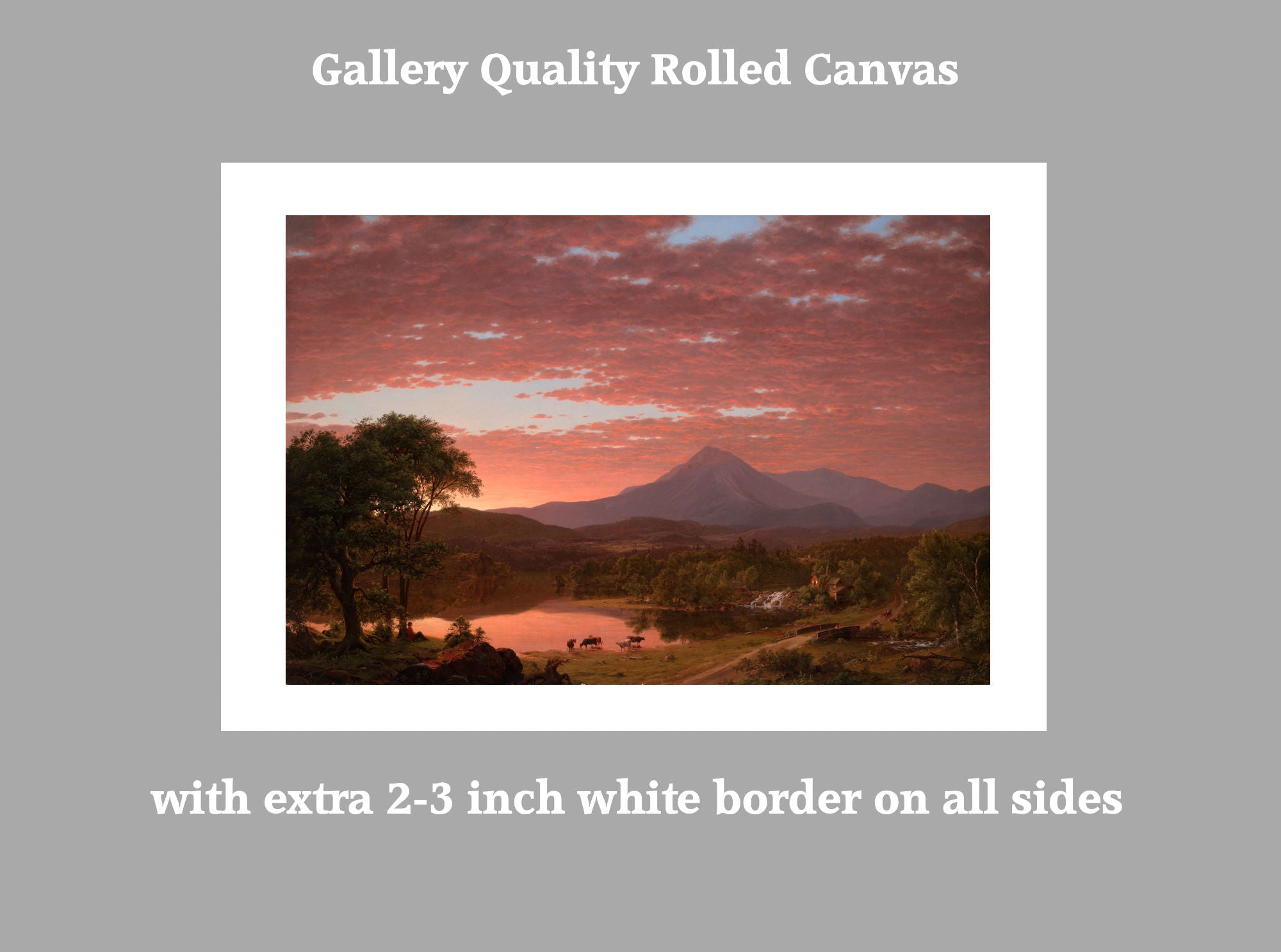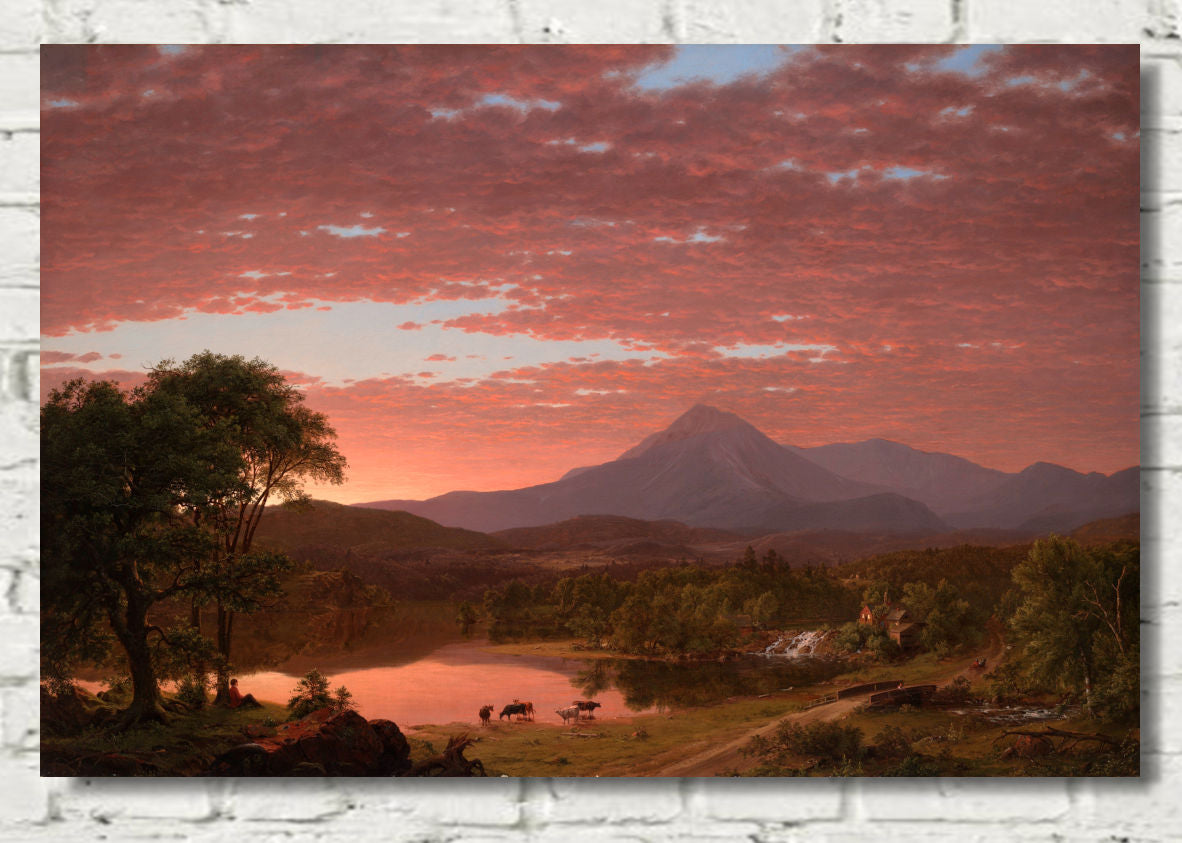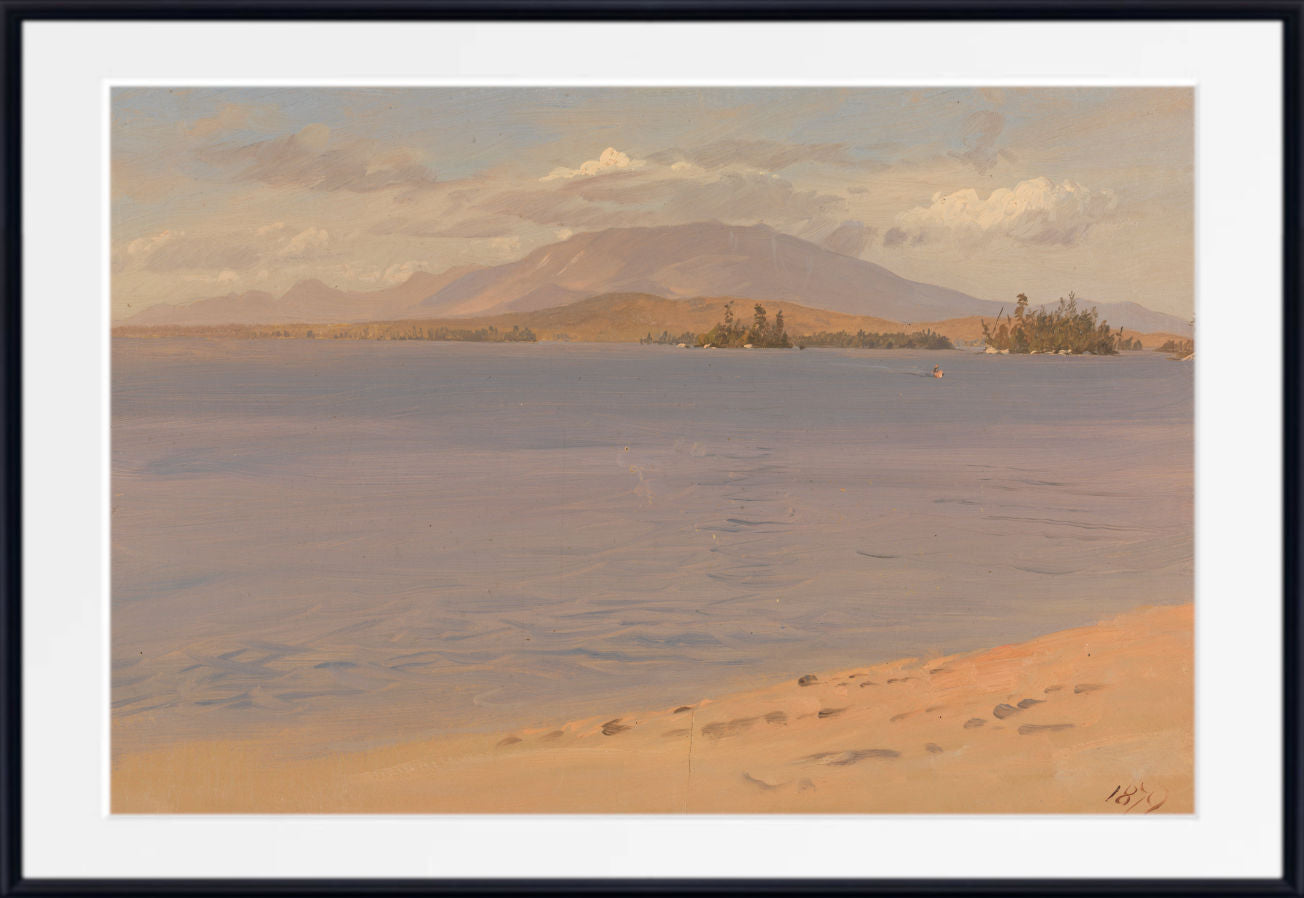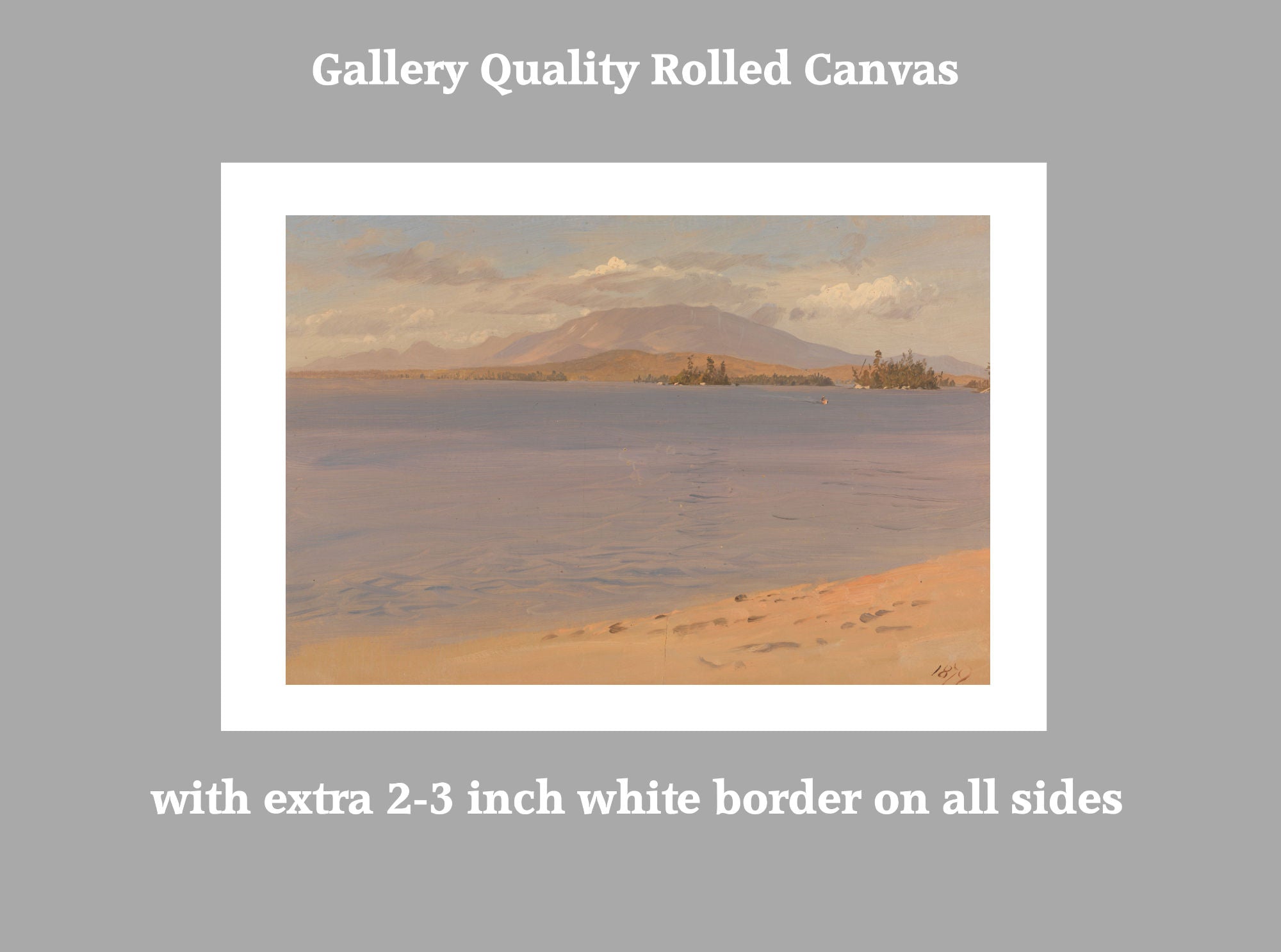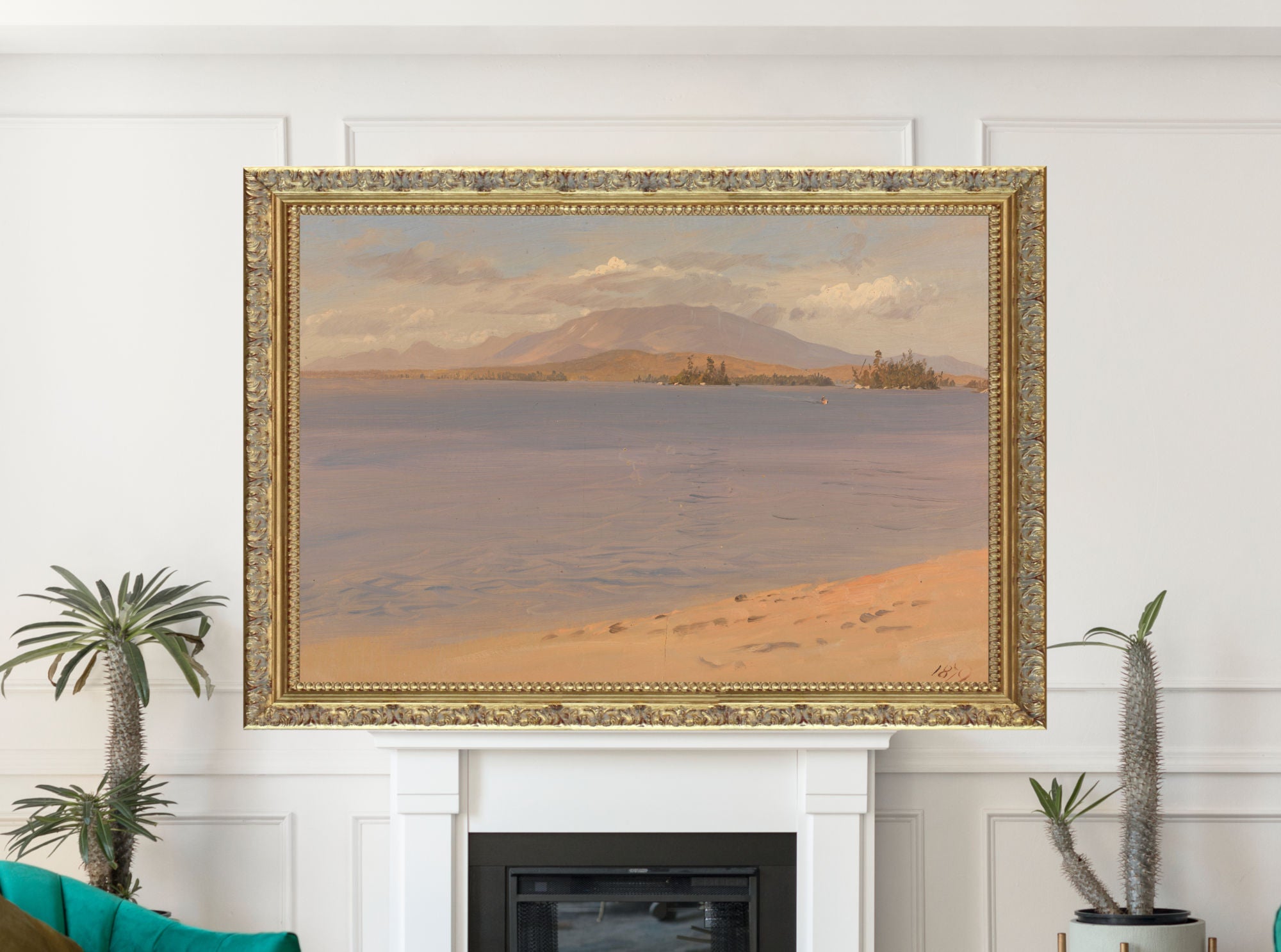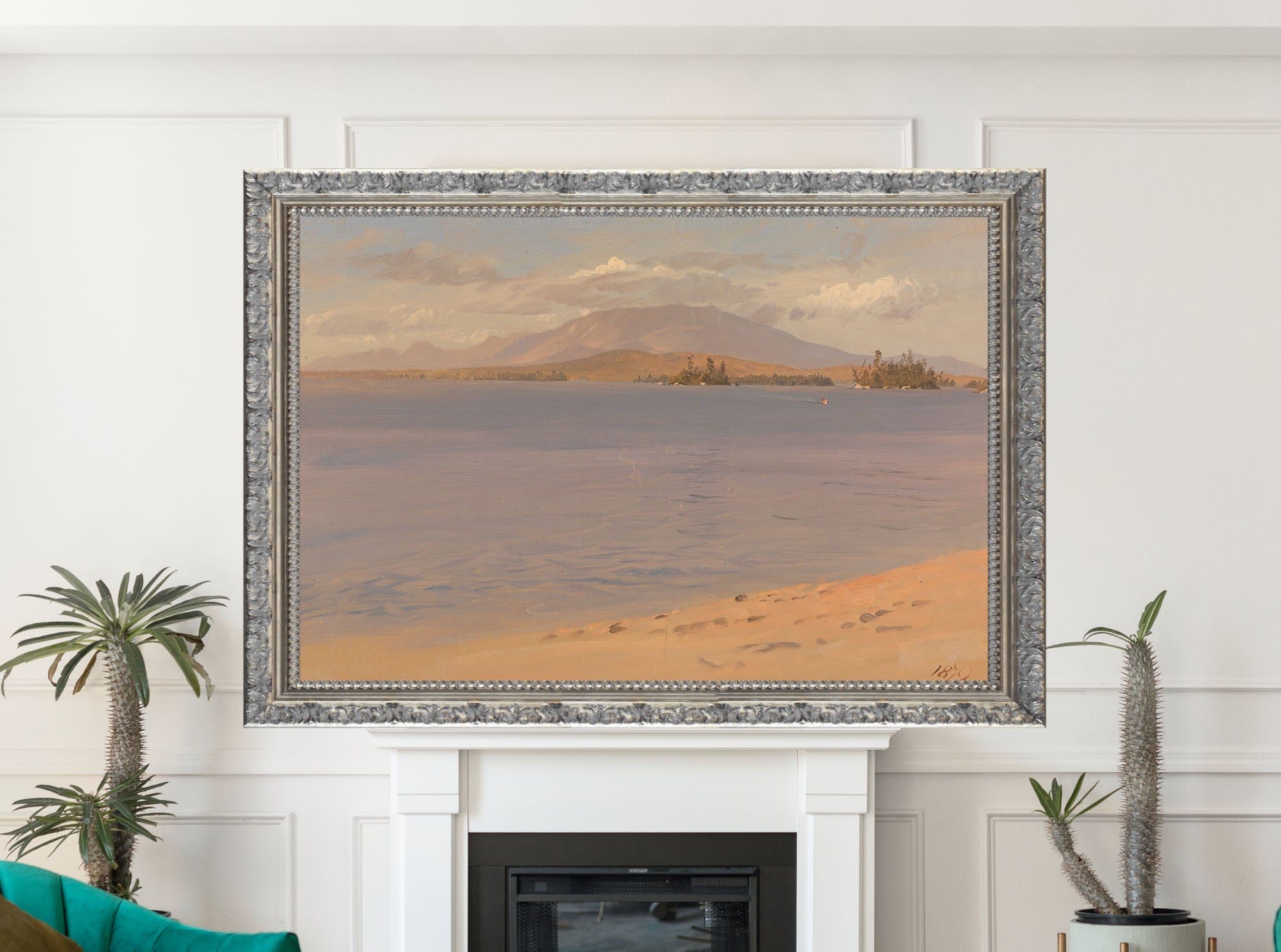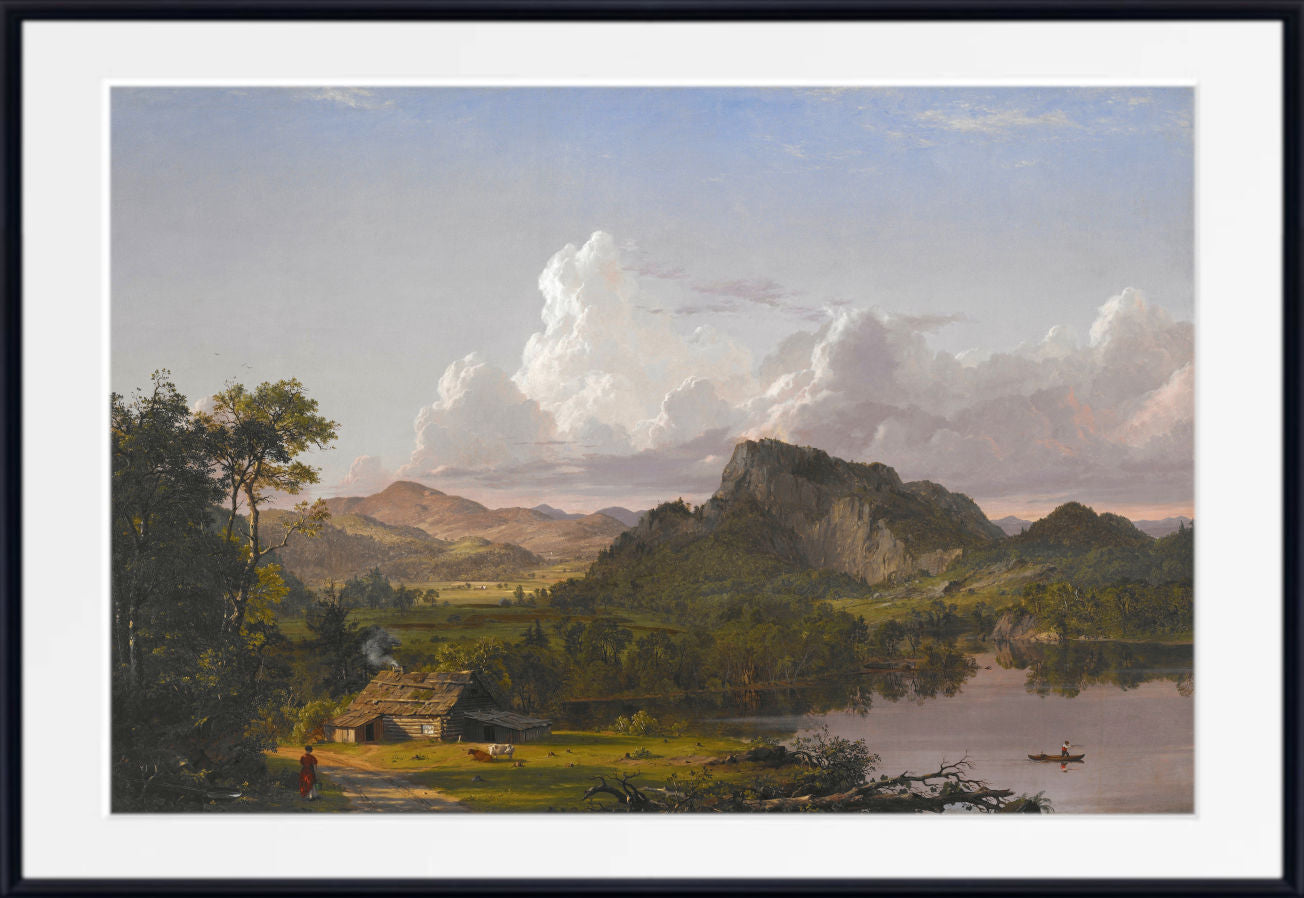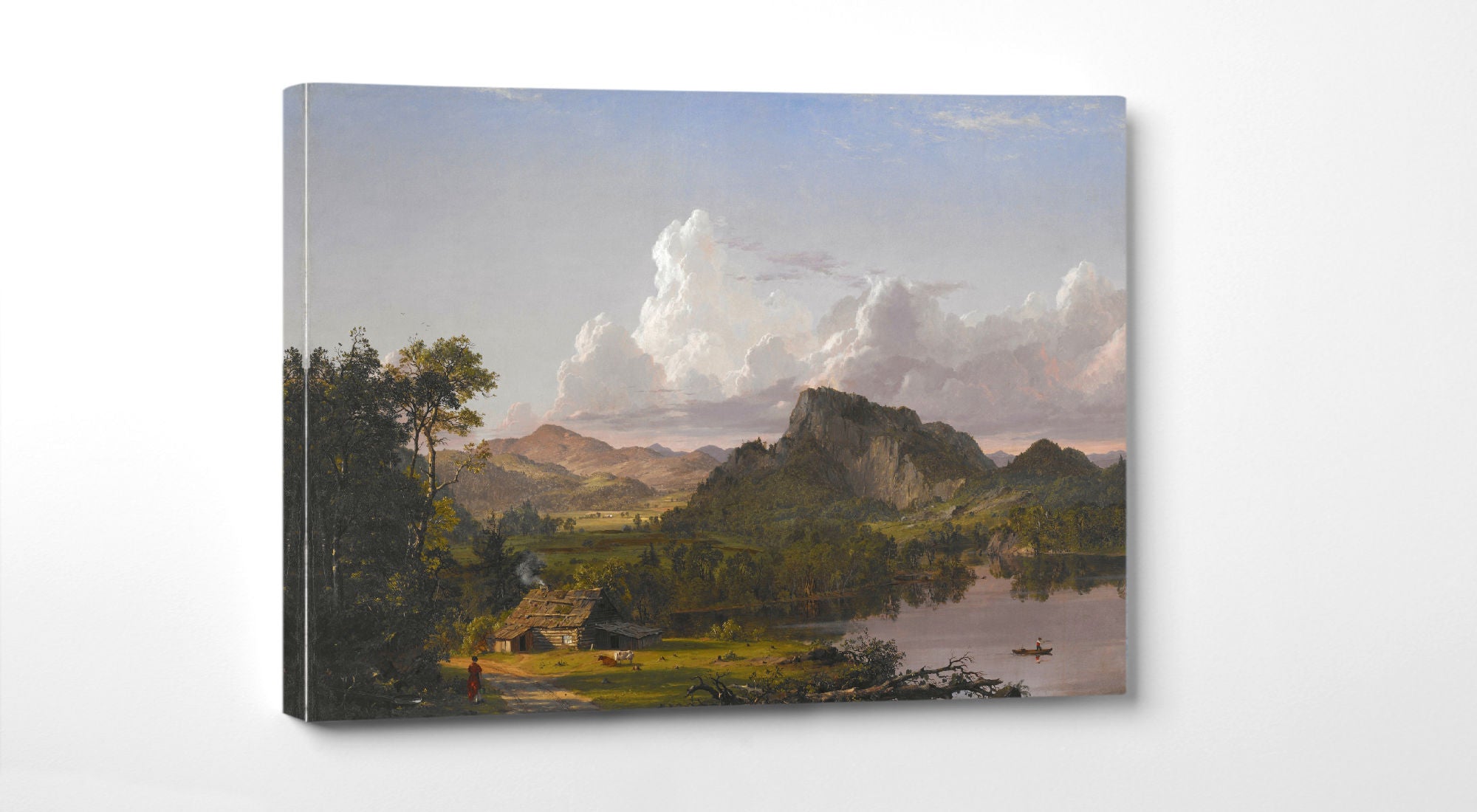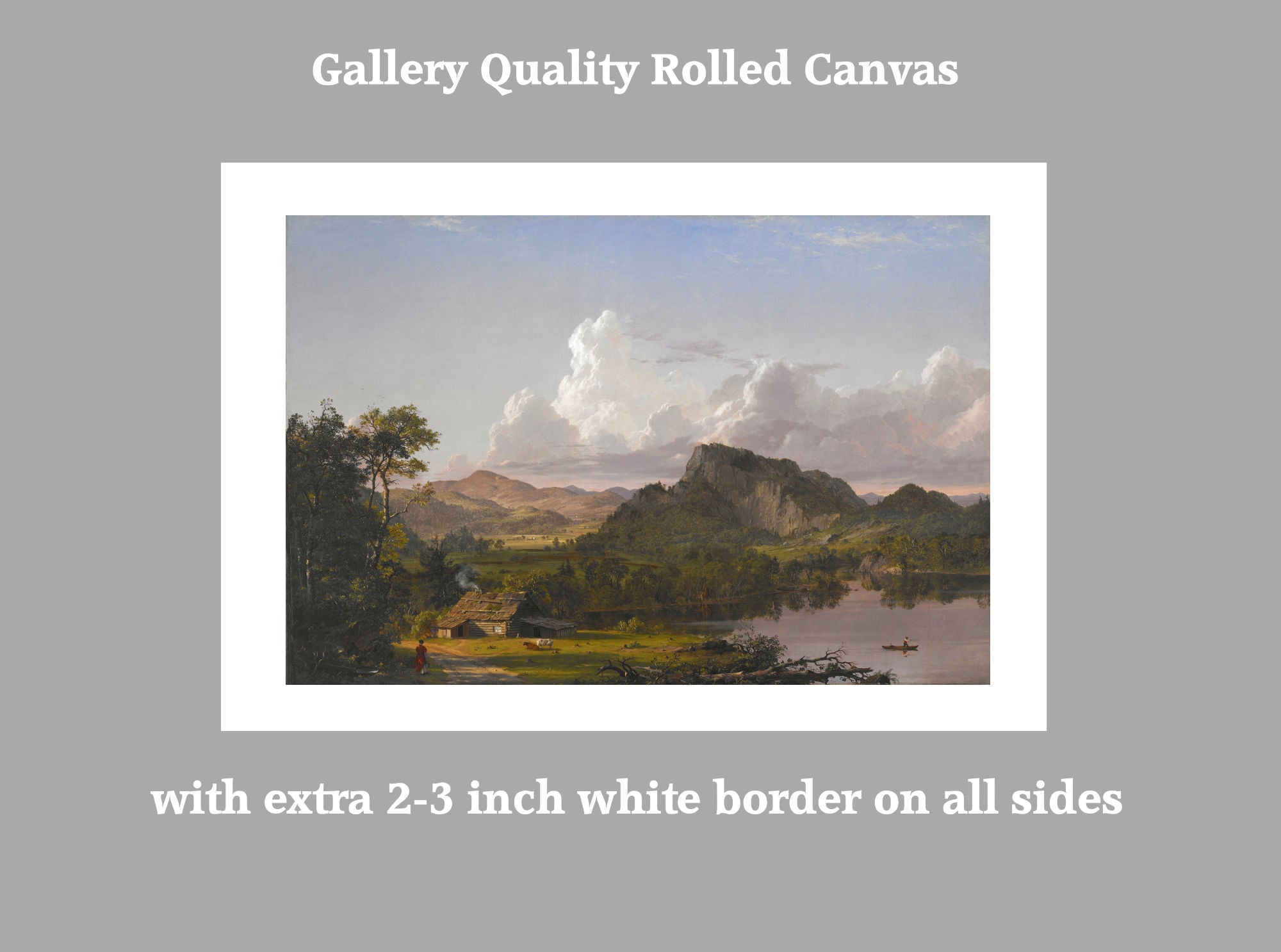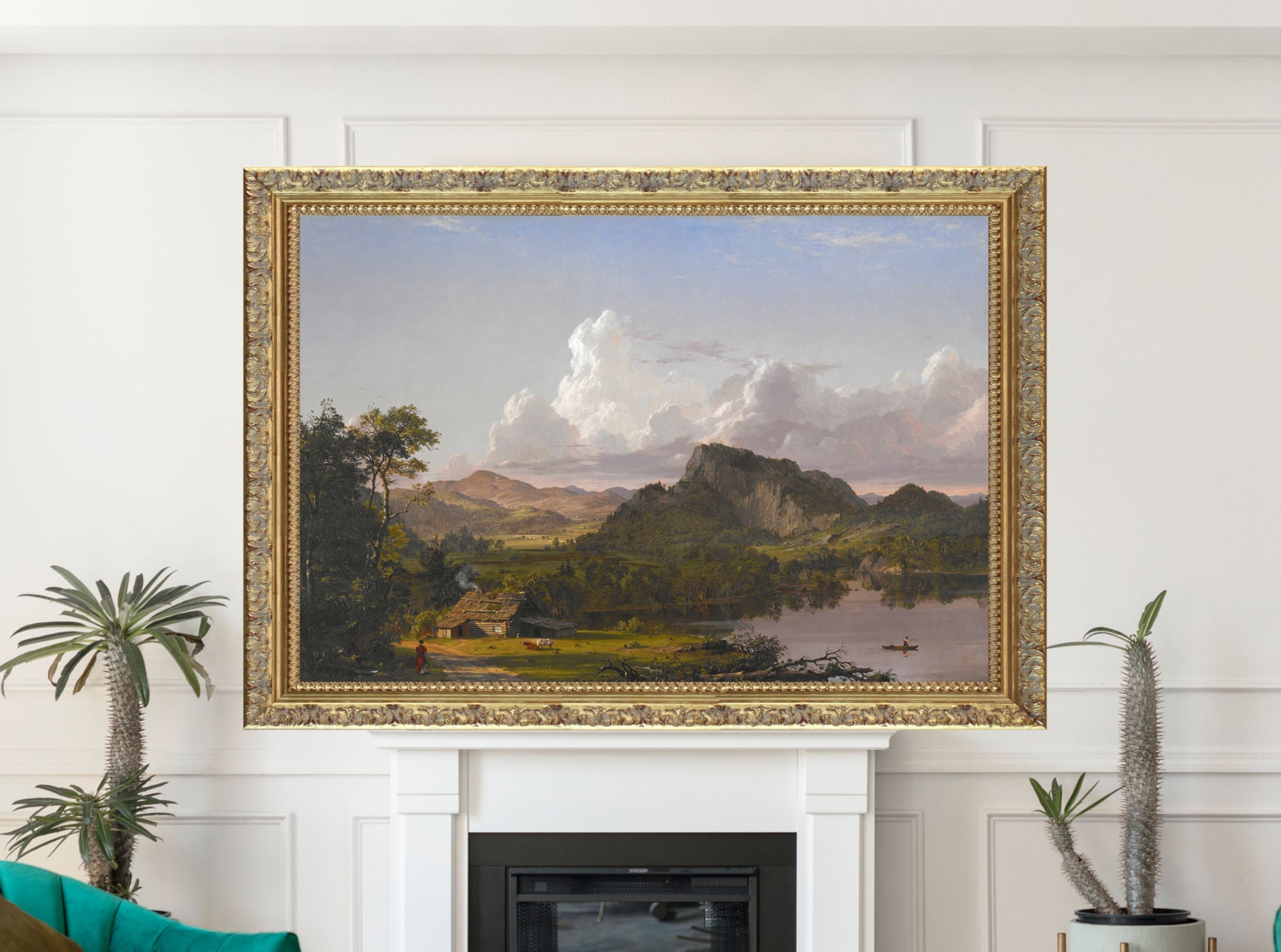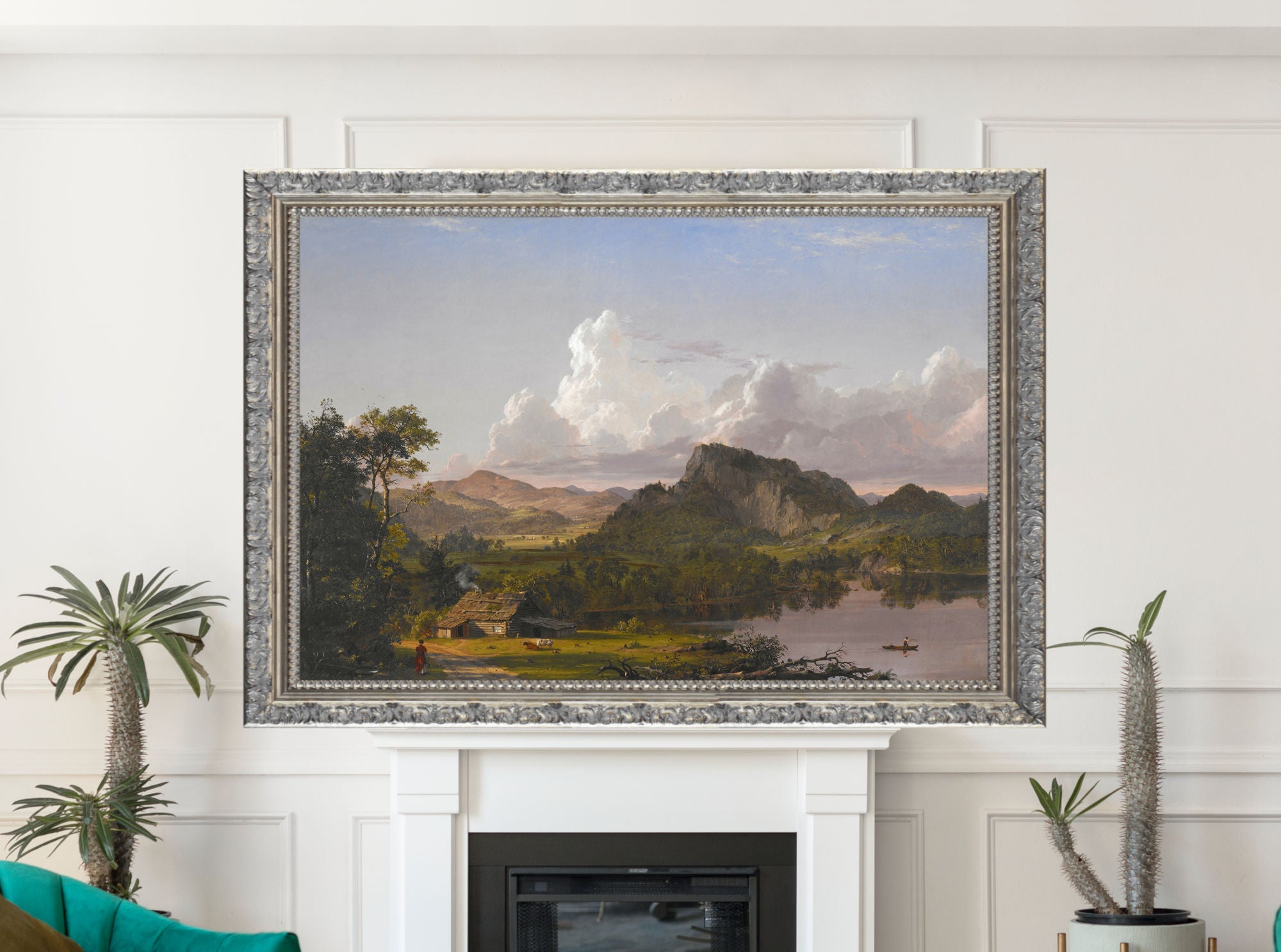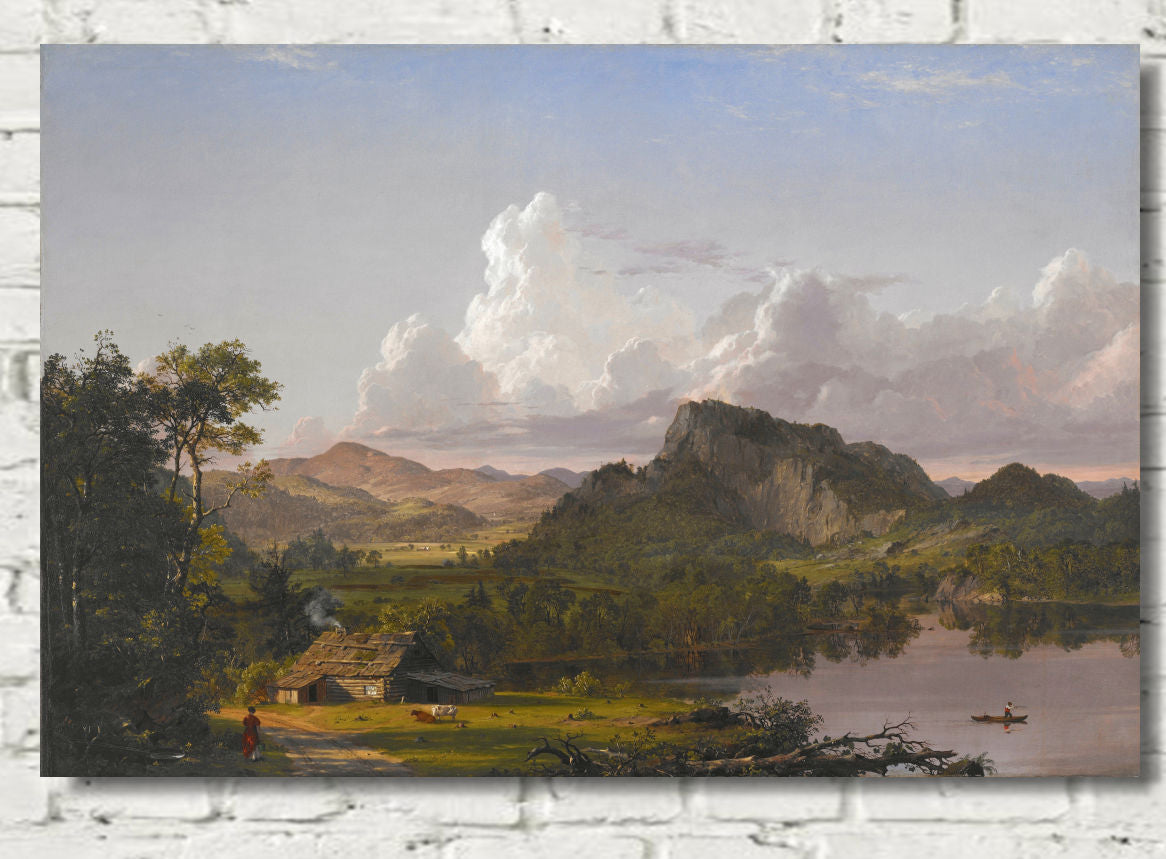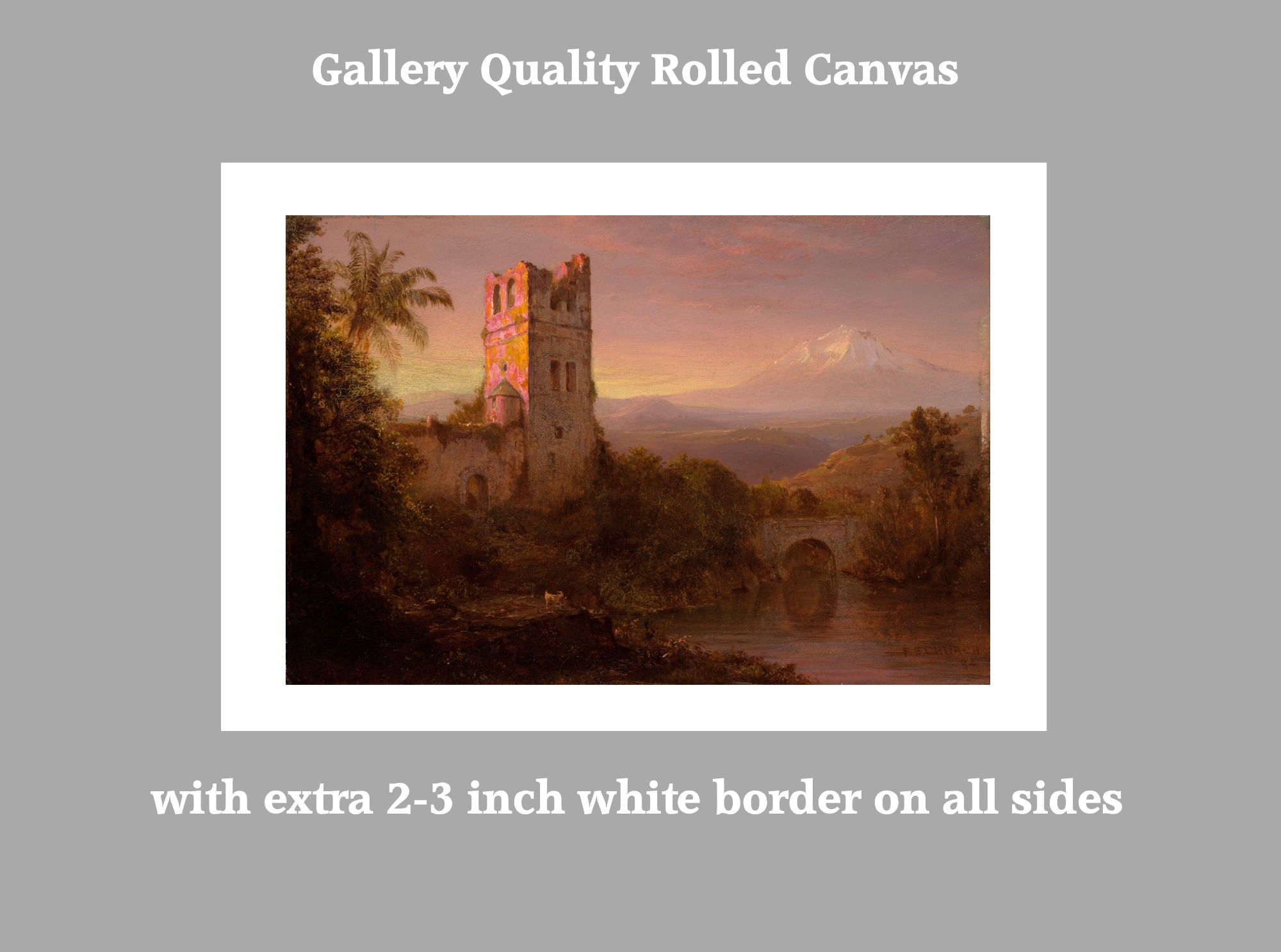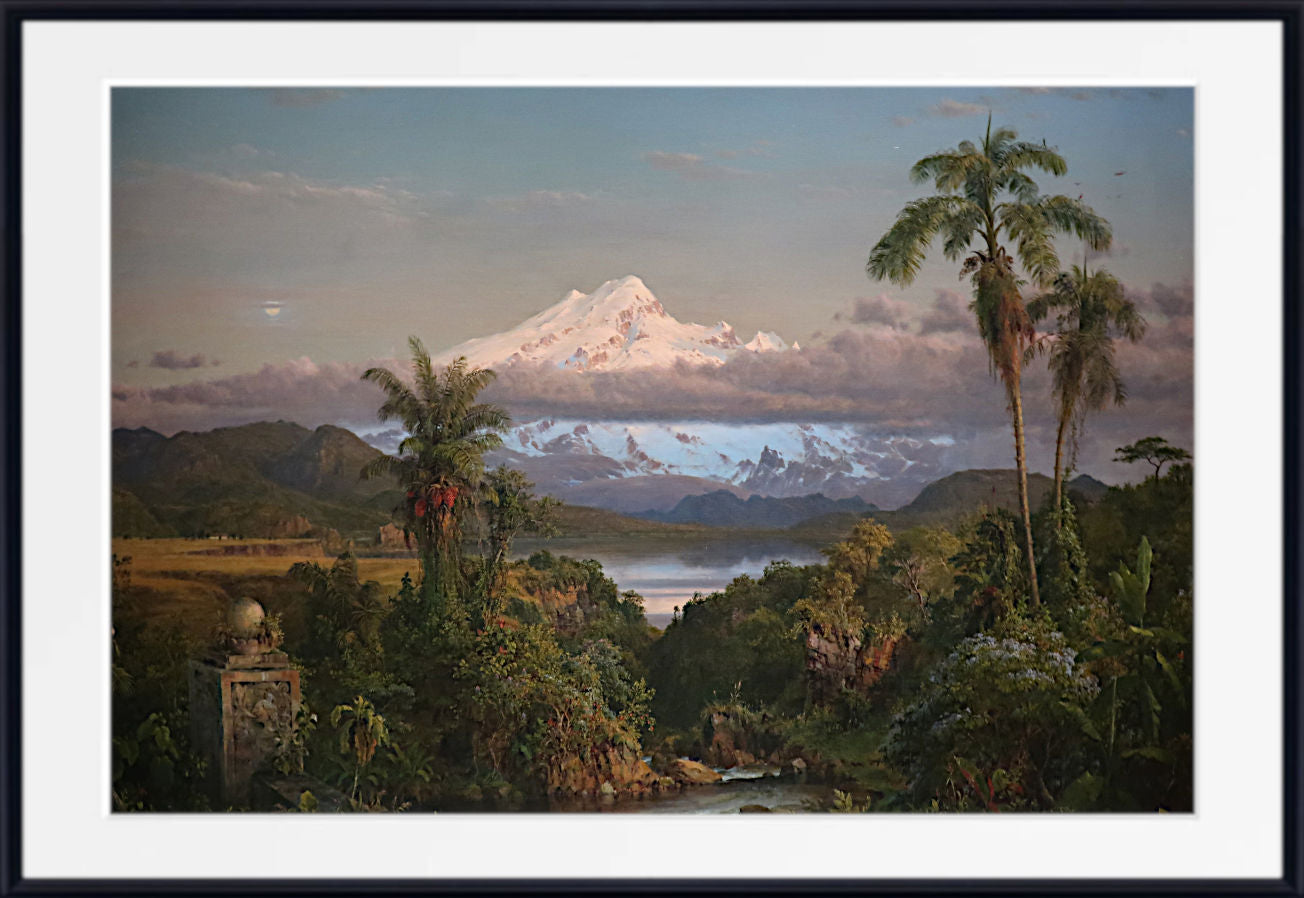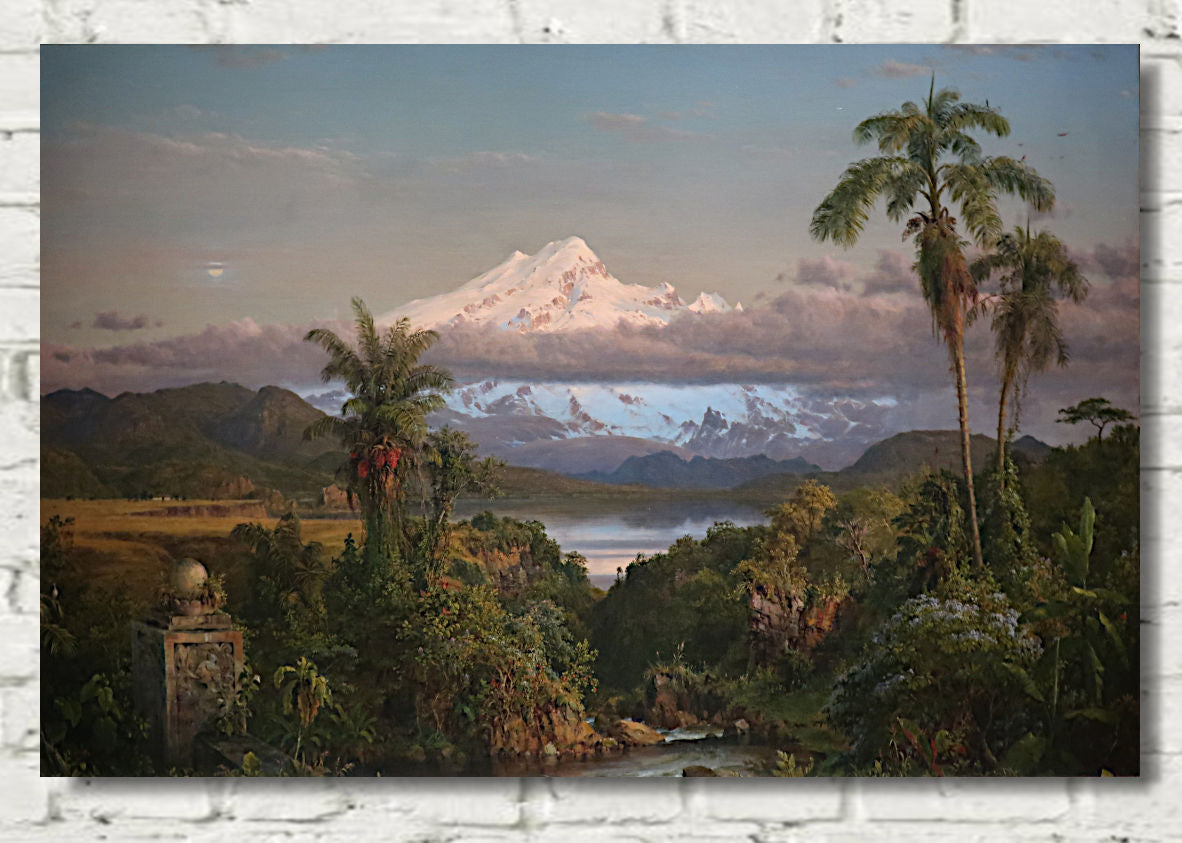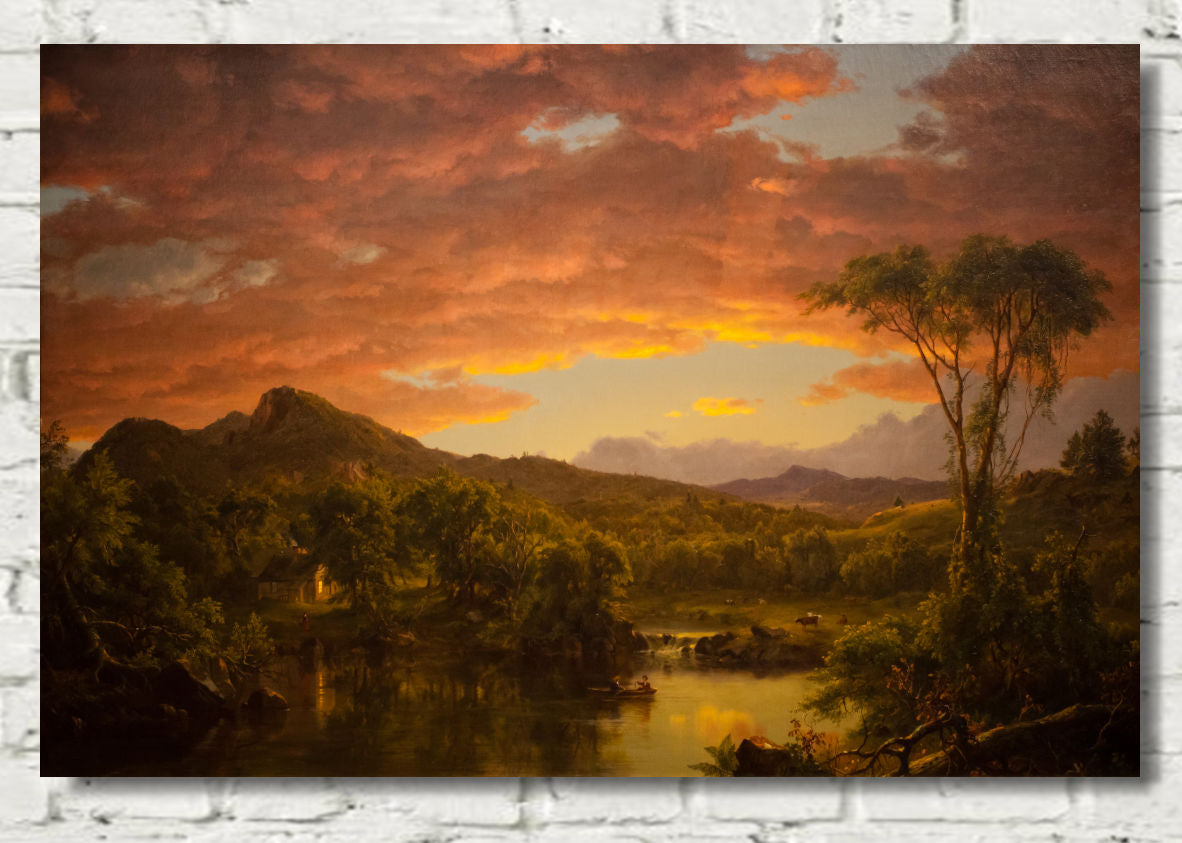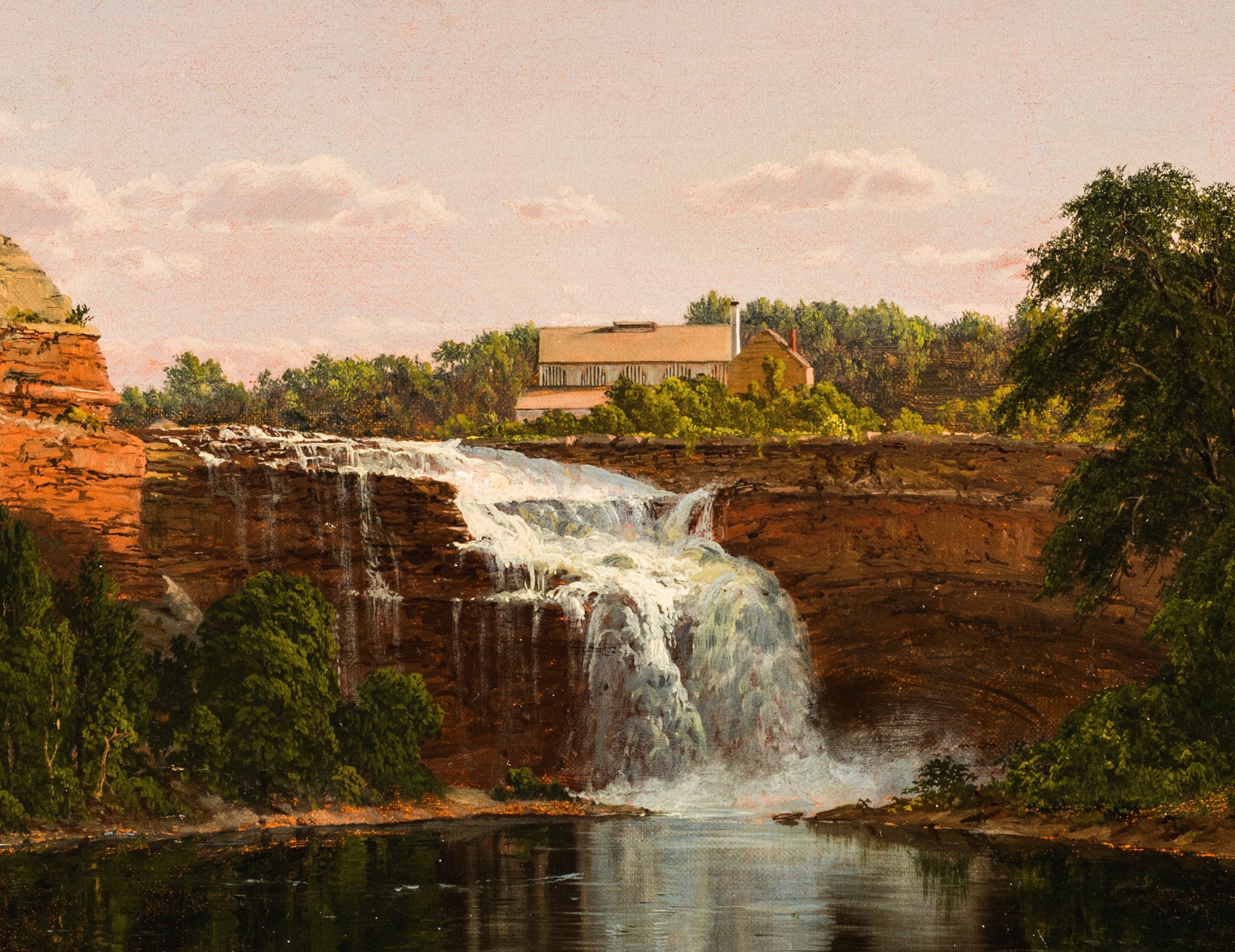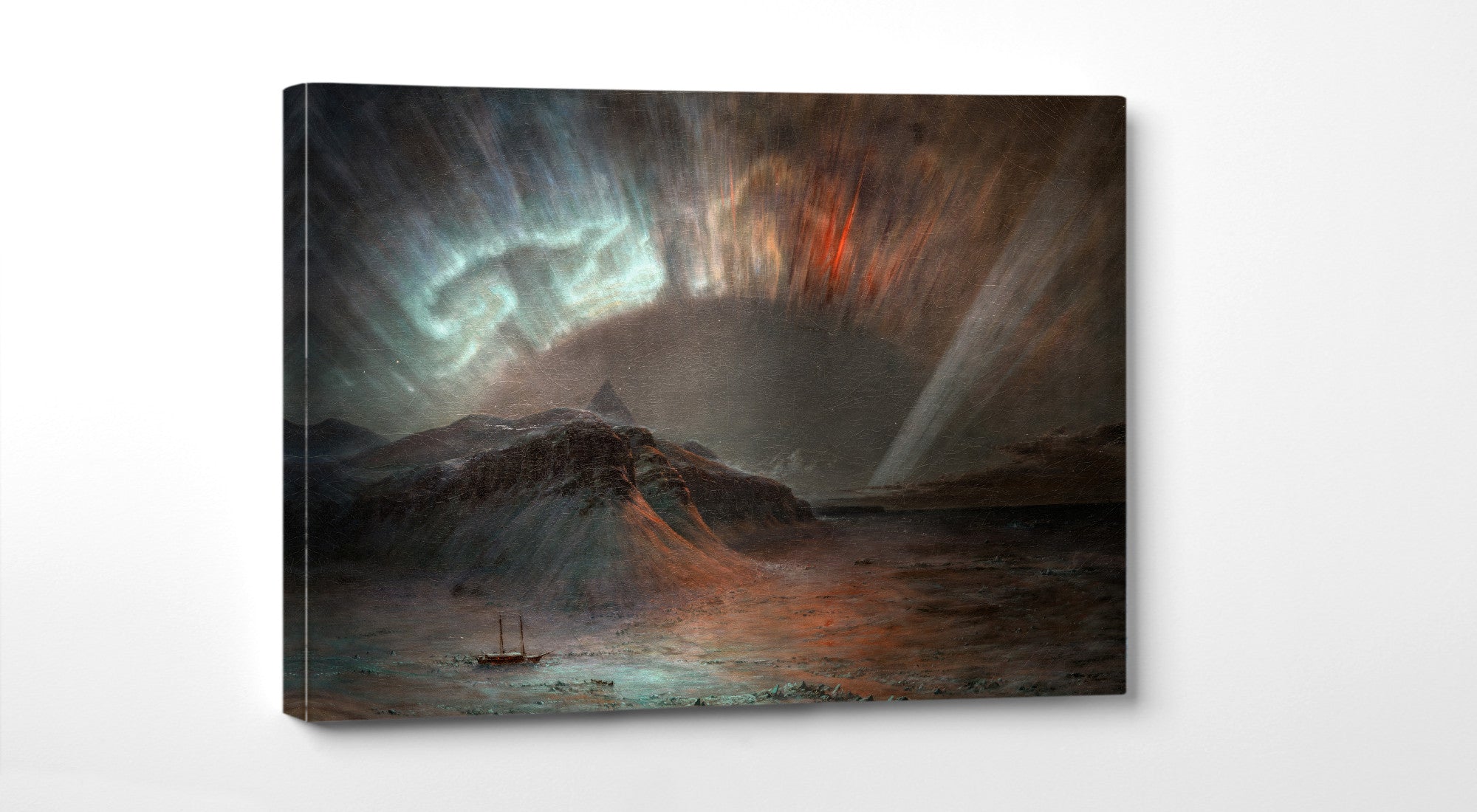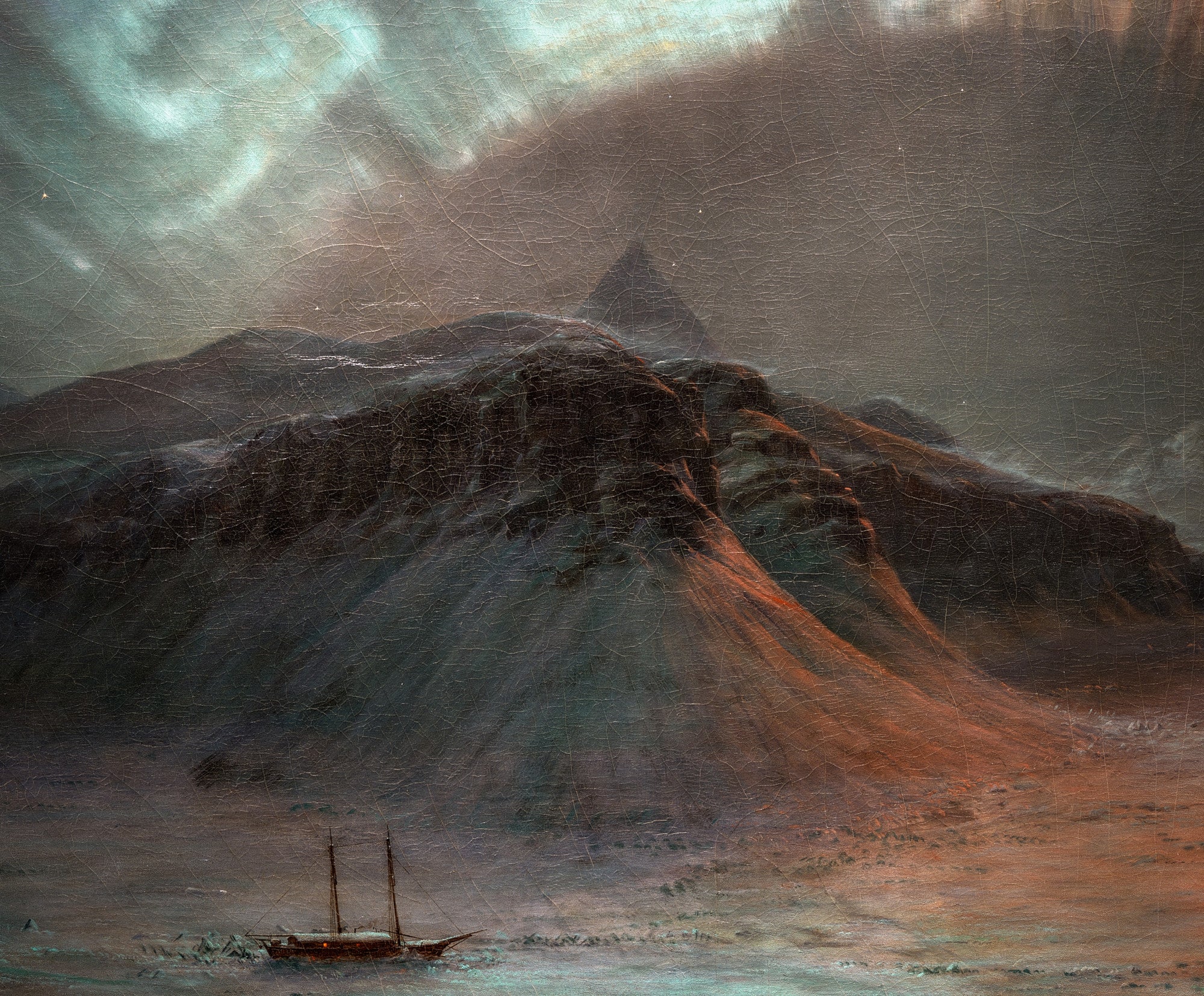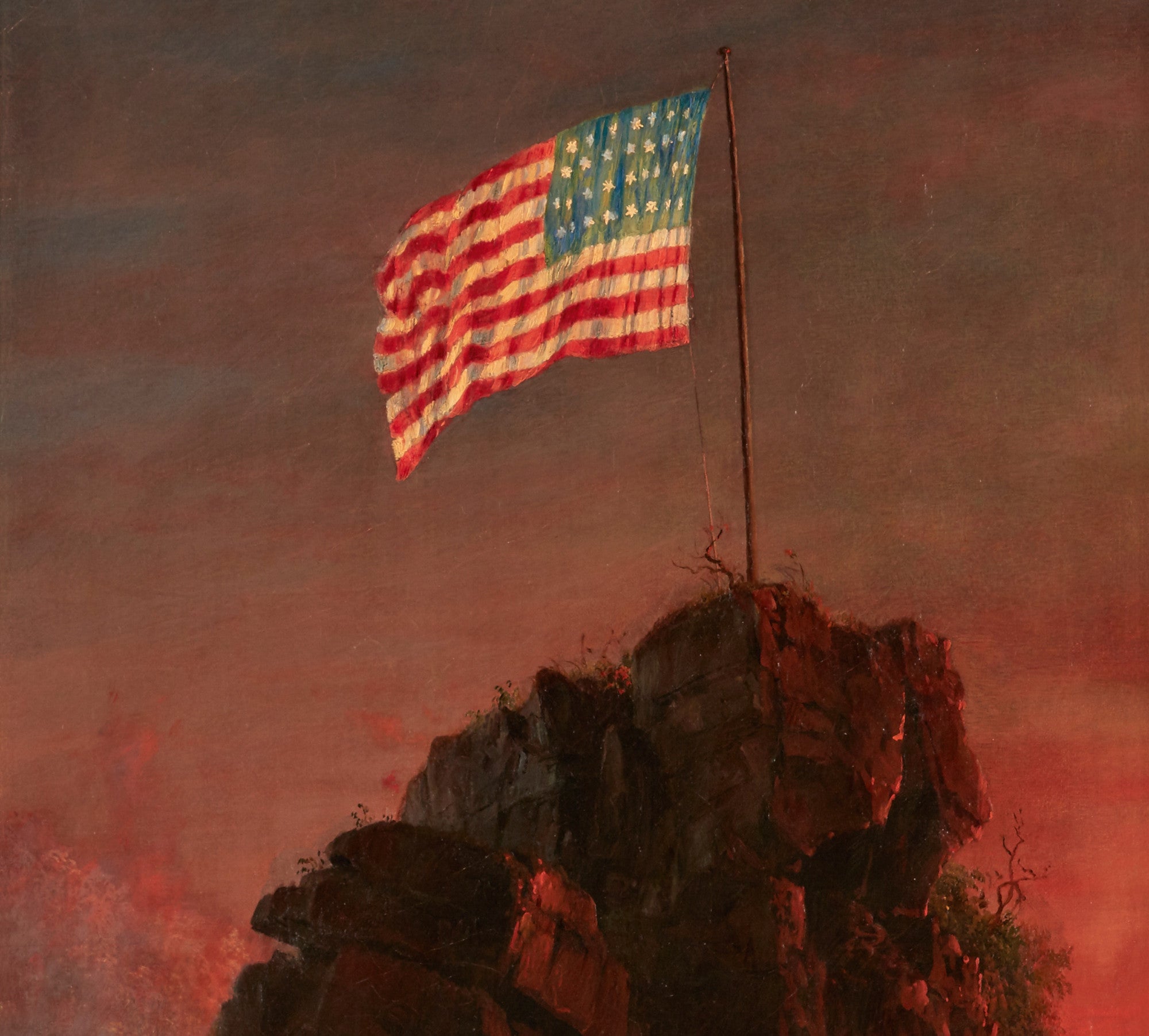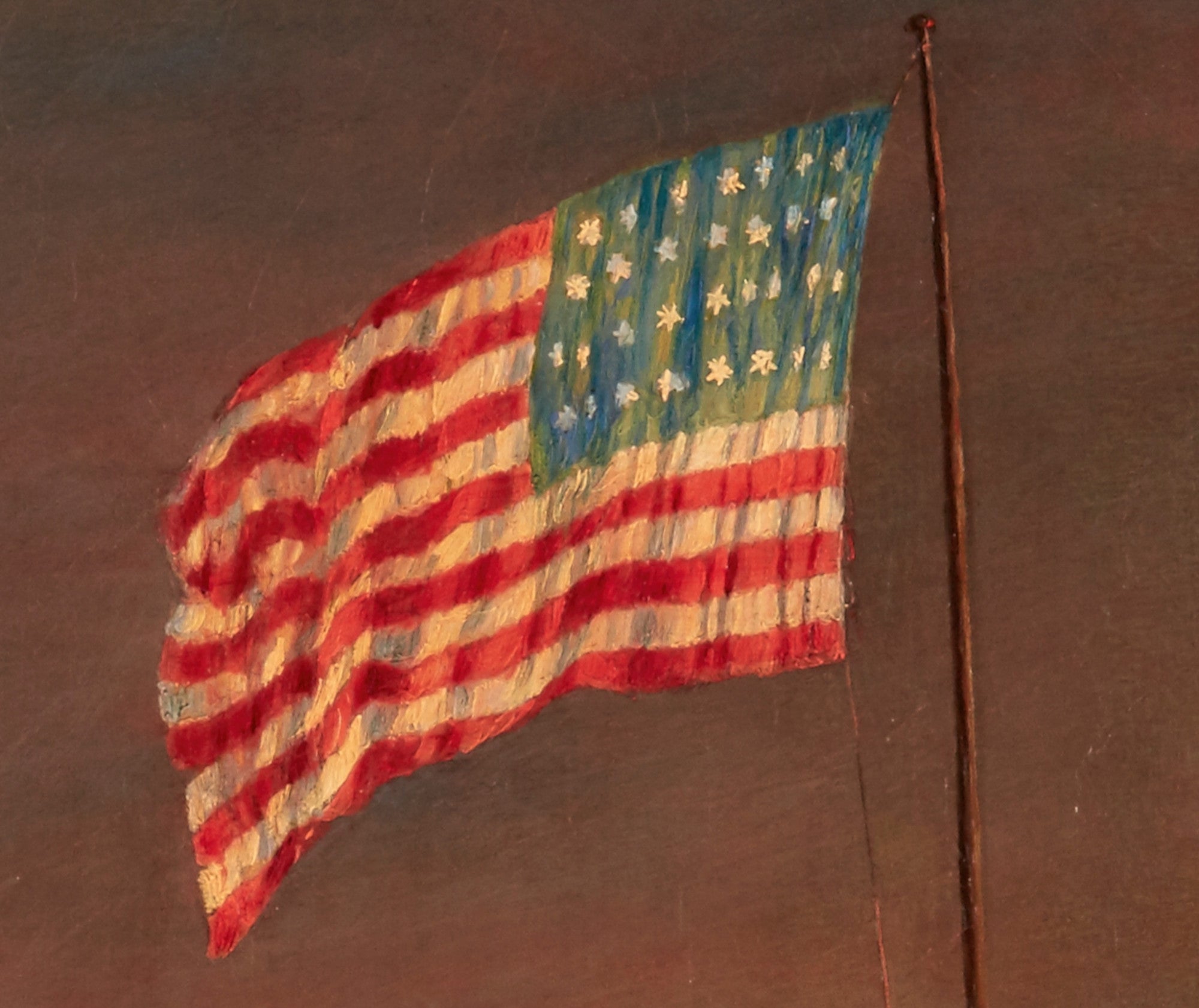Parthenon, Frederic Edwin Church
Couldn't load pickup availability
BUY WITH CONFIDENCE
The evening sun casts a golden light over the famous ruins of the Parthenon. Located at the Acropolis — an ancient citadel above the city of Athens — the Parthenon was built in the middle of the 5th century BC when the Athenian Empire was at the peak of its power.
The image was painted by Frederic Edwin Church, an American artist and member of the Hudson River School of landscape painters. This artistic fraternity recorded the Hudson River Valley and the surrounding mountain ranges, chronicling the disappearing wilderness and the expanding presence of modern civilization. During his lifetime, Church became one of the most famous artists in the United States.
In 1867, Church travelled with his family on an extensive tour of Europe and the Middle East. From France they went to Alexandria in Egypt and then onto Beirut in Lebanon. They visited Jerusalem and Petra, and later Damascus. It was during this trip that Church made a two-week visit to Athens, where he produced sketches and on-site paintings of the Parthenon. It was from these initial studies that he built up the The Parthenon painting of 1871 on his return home.
The painting is large. At nearly two metres wide, the feeling it gives the viewer is of being engulfed by the scene. The composition uses a brilliant device of placing the foreground in shadow — a shadow that runs diagonally upwards from left to right. The effect is to elevate the temple both visually and symbolically, as it is uniquely bathed in this glowing light. The shadow also pulls the viewer inwards, leading the eye to the lighter and more distant details — a sort of invitation to clamber over the rocks and discover the Parthenon for ourselves.
The painting is a joy to look at. Its splendour comes from the feeling of reverence at the scene depicted. Church’s journey to Greece in search of the sites of the ancient world followed in the footsteps of the so-called “Grand Tour” tradition, a custom undertaken by young European aristocrats who visited the classical sites of Rome and Athens as a means of deepening their education of worldly affairs.
The Parthenon was an important stop-off in such a tour. Ancient culture had long been seen as an ideal model for generations of artists and scholars. In the 18th and 19th centuries, architects revived the “noble simplicity” of Greek buildings like the Parthenon in the style known as Neoclassicism, providing the template for so many of the worlds most notable constructions, from Buckingham Palace in London to the White House in Washington DC.
The aesthetic reputation of ancient Greek art was hugely influenced by the writings of the German historian Johann Joachim Winckelmann(1717–68). Winckelmann was decisive in bringing about the Neoclassical era in Western art and architecture. He is important because, not only was he widely read, he also gave the clearest expression of the virtues of Greek art: “The general and most distinctive characteristics of the Greek masterpieces are, finally, a noble simplicity and a quiet grandeur, both in posture and expression.”
In Greek art, Winckelmann saw nature at it’s most beautiful. He also saw a guide for eminence in the modern world. “The only way for us to become great,” Winckelmann wrote, “or if this be possible, inimitable, is to imitate the ancients.”
Many of these sentiments are present in The Parthenon painting. Church depicted the monument with both a sense of eminent glory and wistful longing. This idealised tone subtly hints at the virtues of archeology and by implication, and the elevated tastes of those who appreciated archeology’s finds.
Church’s commission to paint the work came from the financier and philanthropist Morris K. Jesup. Jesup was deeply interested in contemporary science and ethnography, and became president of (as well as a major donor to) the American Museum of Natural History. Among other projects, he also served as trustee for the Syrian Protestant College (American University of Beirut) where he built “Post Hall”, home to the university’s Archaeological Museum and Geology Department.
There is, I think, a palpable sense that The Parthenon painting expresses how individuals like Church and Jesup considered themselves custodians of the ancient tradition. A telling detail hints at such: in the bottom-left corner of the painting the artist has placed his signature on a fragment of stone — as if his name has been etched into the rock itself.
Their efforts were certainly important in establishing the cultural legacy of classical antiquity in modern day America, just as it was for the Europeans on the Grand Tour.
Frederic Edwin Church (May 4, 1826 – April 7, 1900) was an American landscape painter born in Hartford, Connecticut. He was a central figure in the Hudson River School of American landscape painters, perhaps best known for painting large panoramic landscapes, often depicting mountains, waterfalls, and sunsets, but also sometimes depicting dramatic natural phenomena that he saw during his travels to the Arctic and Central and South America. Church's paintings put an emphasis on light and a romantic respect for natural detail. In his later years, Church painted classical Mediterranean and Middle Eastern scenes and cityscapes.


All prints are made using archival art stocks and UV pigment inks to give up to 200 years life. Prints are sold unframed and unmounted.
All orders for unframed fine art prints and original paintings are dispatched within 2 working days of receipt of payment.
Orders for custom framed prints are dispatched within 4 working days.
All orders are fully tracked from dispatch to delivery at your home or business.
All print and original painting orders are fully insured against loss or damage in transit. We refund or replace any damaged or lost orders.
Buy with confidence - read what our satisfied customers have to say - Reviews
Fine art papers are printed without any additional white border Please let us know at the time of ordering if you would like a small additional white border.
Rolled canvas options have an additional white border of approximately 2.5 inches (7cm) on all 4 sides to aid stretching.
Ready to hang canvas panels are stretched on 1.5 inch deep solid pine frames from sustainable forestry sources. The image is mirrored on all 4 sides to give an aesthetically pleasing finish.
Why not have us gift wrap your order and attach a personalised message to the recipient. Available for all orders. Each order is hand wrapped in high quality gift wrap with meatllic ribbon and bow. Your personalised message is printed on a card which is included with your order.
Have your hand wrapped gift delivered directly to the recipient.
Full tracking and insurance included with every order.
Please note design may vary depending upon availability
Just purchase the gift wrap option HERE
We have a wide range of frames in standard sizes and we also make custom size frames.
To order a framed print:
1. select the print size you would like along with the print materials (matte paper, fine art paper).
2. Add your print choice to the basket.
3. Choose from our range of frames
4. Select the same size as the print you have added to your basket. If the frame size you want is not listed please contact us
5. Choose from the mount or no-mount option
6. Add your frame choice to the basket
7. Proceed to checkout.
Why Choose GalleryThane?
- Printed and framed in-house
- Free UK delivery
- Free EU and USA delivery on orders over £200
- Tracking and insurance included in every order
- Fast 1-3 day dispatch
- Gift wrapping service available
- Gallery quality materials
- Sustainable, eco-friendly packaging
- Great customer support
What makes our Prints and Canvas Panels so special

Latest Giclee Printing Technology
We have invested in the latest wide format print technology to produce museum quality giclee prints utilising the highest quality pigment inks to give outstanding colour reproduction.

Museum Quality Archival Fine Art Papers
We print on the finest quality fine art papers with textured, smooth and lustre finishes for prints which last a lifetime.
From aceo miniatures to 40x80 inch large format, every print has our lifetime quality guaranteee.

Solid Wood Frames, Cotton Canvas
All of the wood for our canvas panels and frames is responsibly sourced from manages forests. Our cotton canvas is completely seedless for the highest quality reproduction possible.


